Wild Woman Gamer 10 -- Isabela Granic - Combining science and art to create a more humane digital ecosystem
Wild Woman Gamer 9 -- Bethan Rees - The Wanderer
Wild Woman Gamer 8 -- Deborah Southwell - One bird’s-eye’s view
Wild Woman Gamer 7 -- Victoria Bennett - My Mother's House
Wild Woman Gamer 6 -- Jean Leggett - The Heart of Games
Wild Woman Gamer 5 -- Elise Cretel My Journey as a Writer in Game Design
Wild Woman Gamer 4 -- Crymson Pleasure - The Road To Real Women of Gaming
Wild Woman Gamer 3 -- Tabea Iseli - AVA - A Story of Transformation -
Wild Woman Gamer 2 -- Jordan Erica Webber - Interesting Conversations
Wild Woman Gamer 1 -- Chella Ramanan & Claire Morwood - Before I Forget, by
By Isabela Granic, PhD
Toronto, Canada / Netherlands
For almost 20 years, my research has focused on how to promote emotional health and wellbeing in children, young adults, and their families. After years of research on the developmental, social, and neuropsychological impact of “gold standard” interventions for anxiety and depression, I became deeply frustrated with the continued “small to average” effect sizes of these interventions (at least half of those who participate don’t feel better afterwards). Fuelled by this frustration, about 10 years ago I tried something completely different. I launched what started off as a lonely little research project aimed at radically reconceptualizing how we design and deliver programs for emotional and mental health. At the centre of this approach was a focus on the transformative properties of digital, interactive play and the use of video games to help people practice emotional resilience skills (reviewed in our article in American Psychologist). More recently, we presented a framework by which science and design can be combined to reinvent much of what seems corrosive on the internet and to design digital experiences (games, apps, social media) that promote healthy identity development (see Granic, Morita, & Scholten, 2020).
Over the past decade, our lab has grown to include more than 20 Phd and Masters students in educational and developmental psychology, programmers, artists, designers, as well as youth and clinician stakeholders from all over the world. Our games and apps are empirically evaluated in schools, online communities, mental health settings, and with the general public through rigorous randomized controlled trials that include longitudinal designs that can establish their long-term benefits. For example, we showed that our neurofeedback video game, MindLight, was as effective in reducing anxiety in children as cognitive-behavioural therapy; and those improvements were maintained even six months after the kids stopped playing the game. Our results were published openly, to encourage other designers and scientists to apply our multidisciplinary methodology and create effective and engaging play experiences for themselves (see Schoneveld et al., 2018, Prevention Science.)
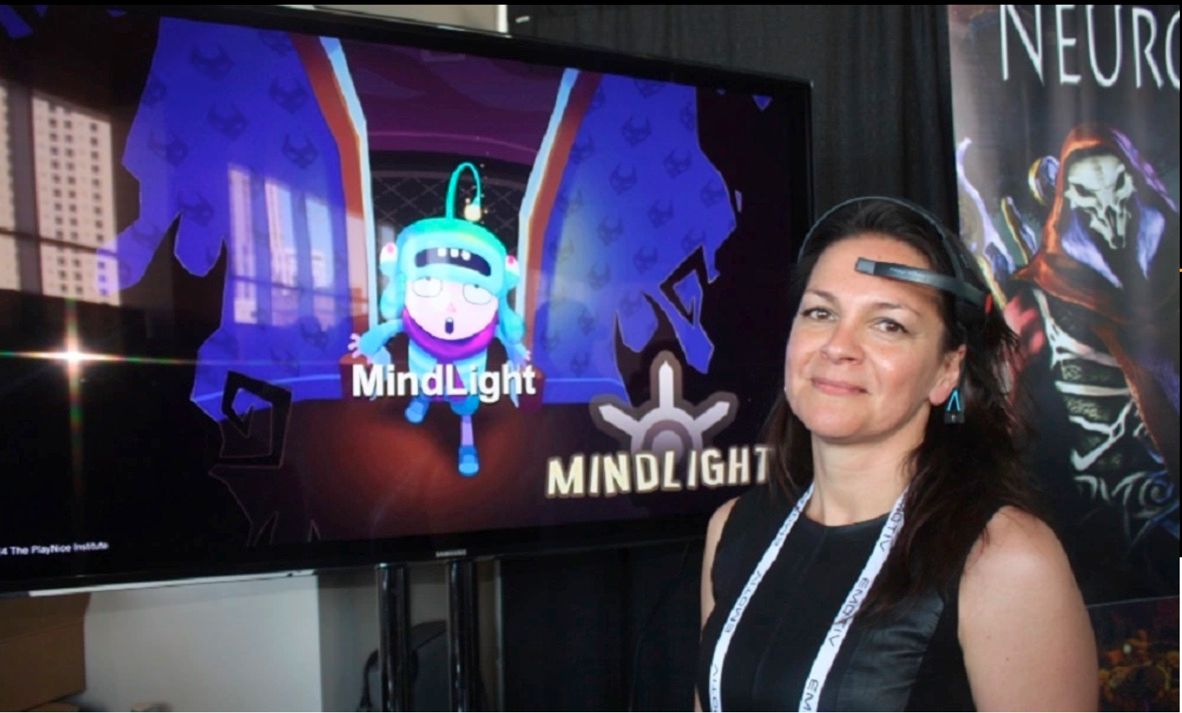
Out of the Ivory Tower
Our empirical studies and review articles were meant to reach not only researchers and academics in psychology but also stakeholders in the field of mental health, clinicians, teachers, and parents. Most importantly, we wanted to build digital interventions that felt relevant and important to young people themselves, and to hand those games and apps to our target audience directly. But science, especially in most academic contexts, proceeds much slower than most of us would want. Even when the science is complete, the impact of the findings is questionable. Over the last several years, I became disenchanted with the importance of scientific journal articles for industry professionals: Our articles are often written in dry, jargon-rich language, they are steeped in statistical methods and results that are hard to interpret, and they are mostly locked behind paywalls. Even without those barriers, few industry professionals care to consider those scientific sources. Also, scientific articles do not replace the digital products themselves and the road from research prototype (no matter how beautiful, engaging, and effective it may be) to commercially viable product is a long one and not well worn by academics.
We have taken a step back and reconsidered the best strategies for maximizing impact without compromising the integrity of scientific practices that are critical for making a demonstrable dent in mental health outcomes. Our current approach moves past traditional avenues of knowledge dissemination. One way we’ve done that is to partner with like-minded game design studios that aim to incorporate science-backed mechanisms while also being focused on commercial success from the outset. For example, we have worked for years with the DEEP VR team, led by Owen Harris and Niki Smit, to test their beautiful, immersive underwater meditation experience that is powered by the players’ own breathing. After being scientifically tested for its impact on anxiety and stress (led by PhD student, Joanneke Weerdemeester), the game is ready to be launched on the Occulus Quest. With this type of science-industry partnership, our lab’s real-world impact is likely to be much bigger than if we had kept all the design and development inside the enclaves of academia.
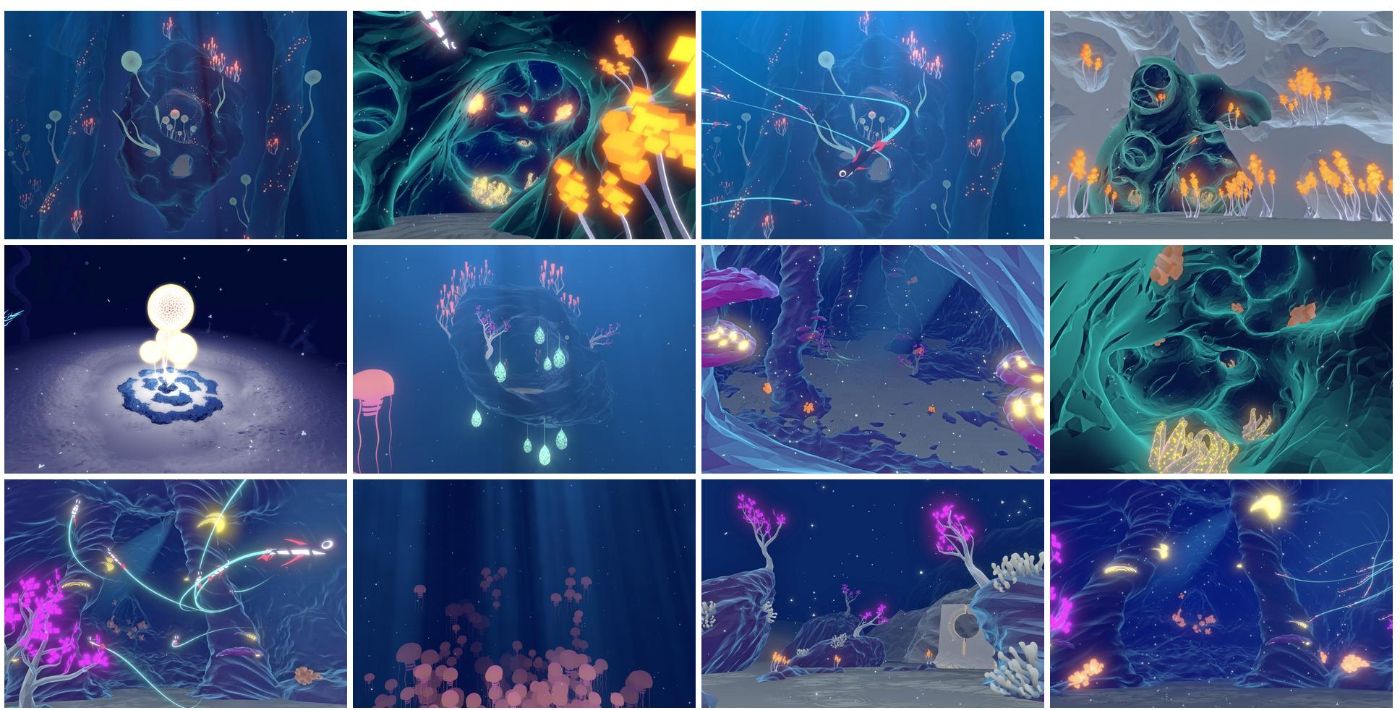
Another strategy for increasing our real-world impact is to roll out our design and research framework to both academic and industry-based labs who are interested in developing their own evidence-based games and apps. In the last five years, the GEMH lab has developed, tested, and iteratively updated a transdisciplinary framework that serves as a set of guidelines, interactive tools, mindset practices, and step-by-step methodologies for developing technological innovations aimed at promoting emotional and mental health.
There are over 5000 “wellness” apps on the market right now, making differentiation crucial for success. One way to differentiate is to provide scientifically valid evidence that a particular transformative tech actually promotes and evinces the change it claims to make with regards to human flourishing. However, the vast majority of teams lack the expertise required to establish this type of scientific evidence. Our framework provides these tools. On the other hand, there are scientists that aim to integrate the science of mental health and wellbeing into tech-based tools, but they have very little idea how to make their products attractive and engaging with mechanics that are intrinsically delightful and playful. Developing engaging technologies often seems trivial and easy to these scientists, and very little attention is paid to the design elements that capture users’ attention without being coercive. This is the second crucial contribution of our Toolkit: to help scientists design not only for statistically significant effects in their research studies, but also for engagement and retention in the “real world”.
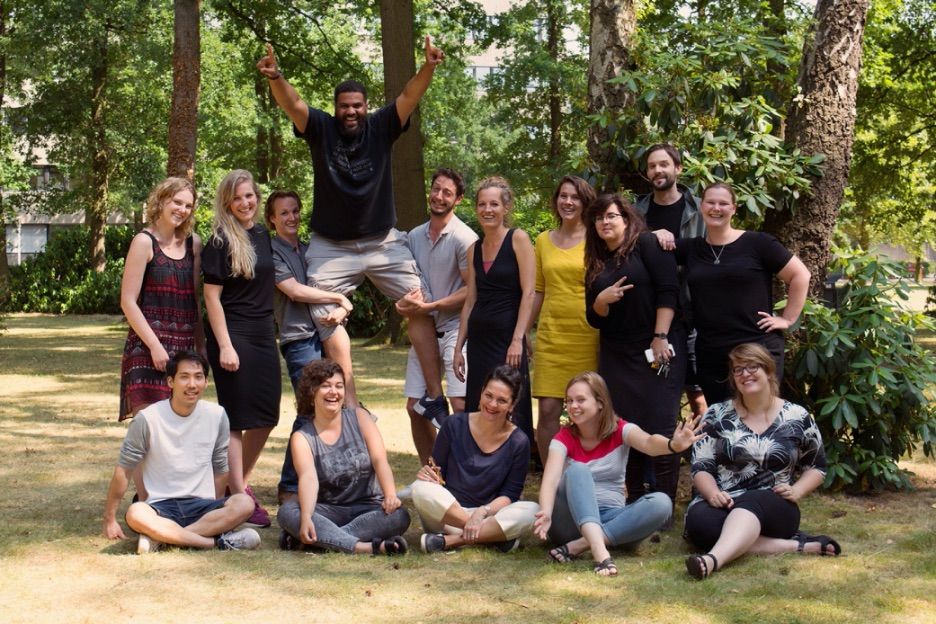
Call to Action.
In the next 1-3 years, we’re aiming to share our framework for designing, evaluating, and deploying transformative technology with as many scientists, designers, industry partners, and others who are interested. As we share the Toolkit that’s been working for us, we hope to receive feedback about its usefulness from varied partners and to continue to iterate the tools so they are flexible and constructive across a wide range of goals, target audiences, and technologies. We’re hoping to host the toolkit on a dedicated, online interactive website which will include a community forum for discussing how we address the challenges of combining science and design in our constantly morphing digital “now”. We’re also hoping to host a series of workshop and conferences where artists, designers, scientists, and entrepreneurs can come together to ideate and build a new iteration of online experiences that feel more socially affirming and emotionally authentic. Get in touch through our website or Twitter DM if you’d like to work alongside us.
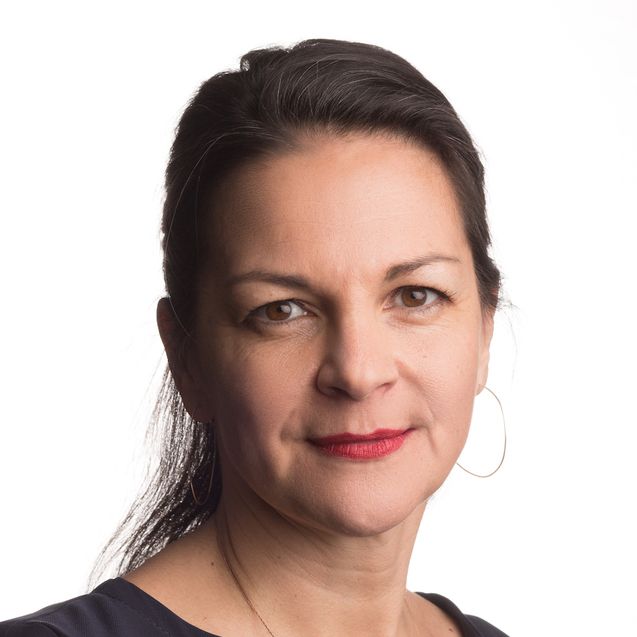
Isabela Granic got her PhD at the University of Toronto in developmental psychology. She is currently Professor in the Developmental Psychopathology department in the Behavioural Science Institute at Radboud University, in the Netherlands. She is also Director of the Games for Emotional and Mental Health (GEMH) lab, a large, multidisciplinary research and development lab for designing and testing applied games for mental health. By integrating clinical and developmental research with interactive media design, she is driven to create a suite of evidence-based games that are also commercially viable and can be widely deployed to prevent and treat anxiety, depression, and addiction in young people and families. Isabela is currently transitioning out of full-time academia to work at the intersection of science and industry. She’s increasingly interested in helping transdisciplinary teams design and rigorously evaluate the impact of digital tools on mental health and human flourishing. More broadly, she’s keen to help bright minds connect ideas with other minds (across art, design, engineering, and psychological science), making those collective minds matter all the more, to each other and to the world more broadly.
by Bethan Rees
Swindon, UK
June 2021
Picture the horror of a blank page. The lack of inspiration, experience, or bravery in your creativity to write anything down. This is where Creative Writing for Therapeutic Purposes (CWTP) shines.
CWTP allows a participant to explore feelings, the environment, imaginative ideas and just about anything, without the pressure of spelling, grammar or inspiration holding them back. It can be an individual experience or practiced in facilitated groups. Everything is down to choice: how deep the participant goes, how much they share with others and how they interpret the exercises set. There are safety guidelines in place which are agreed with participants beforehand, with flexibility to what these could be. In CWTP there tends to be a focus on journaling, poetry, free-writing, dialogues, and letter writing, though any type of creative writing can be used.
Now, I have to admit, there were times which were probably best spent reading educational articles, or jotting down notes for future essays, when in truth, I was actually playing video games. But since I started my MSc studies in CWTP, it is all I can see anywhere – especially in the games I play. These tend to be story-heavy “Walking simulators” like ‘That Dragon Cancer’, ‘Everybody’s Gone to the Rapture’ and ‘The Beginner’s Guide’, exploring heavy themes around illnesses and death. So, I started to wonder “Can video games be considered CWTP?”, and even one step further, “Could I design a video game specifically around CWTP?”.
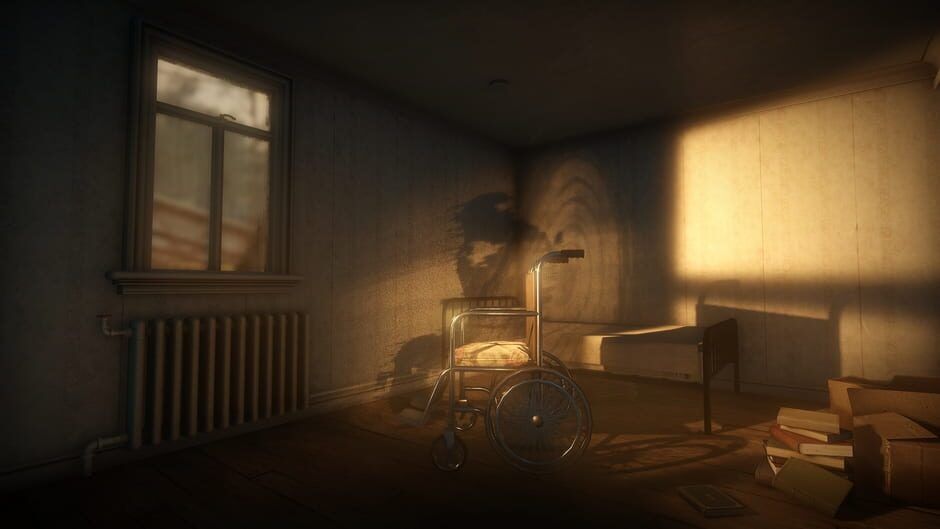
During lockdowns due to the Covid-19 crisis, technology has been crucial in allowing people to communicate, and video games have been crucial as a form of escapism. However, there has been a negative impact on writing groups that meet in person. My research is exploring if these aspects can be combined for the benefit of CWTP practices.
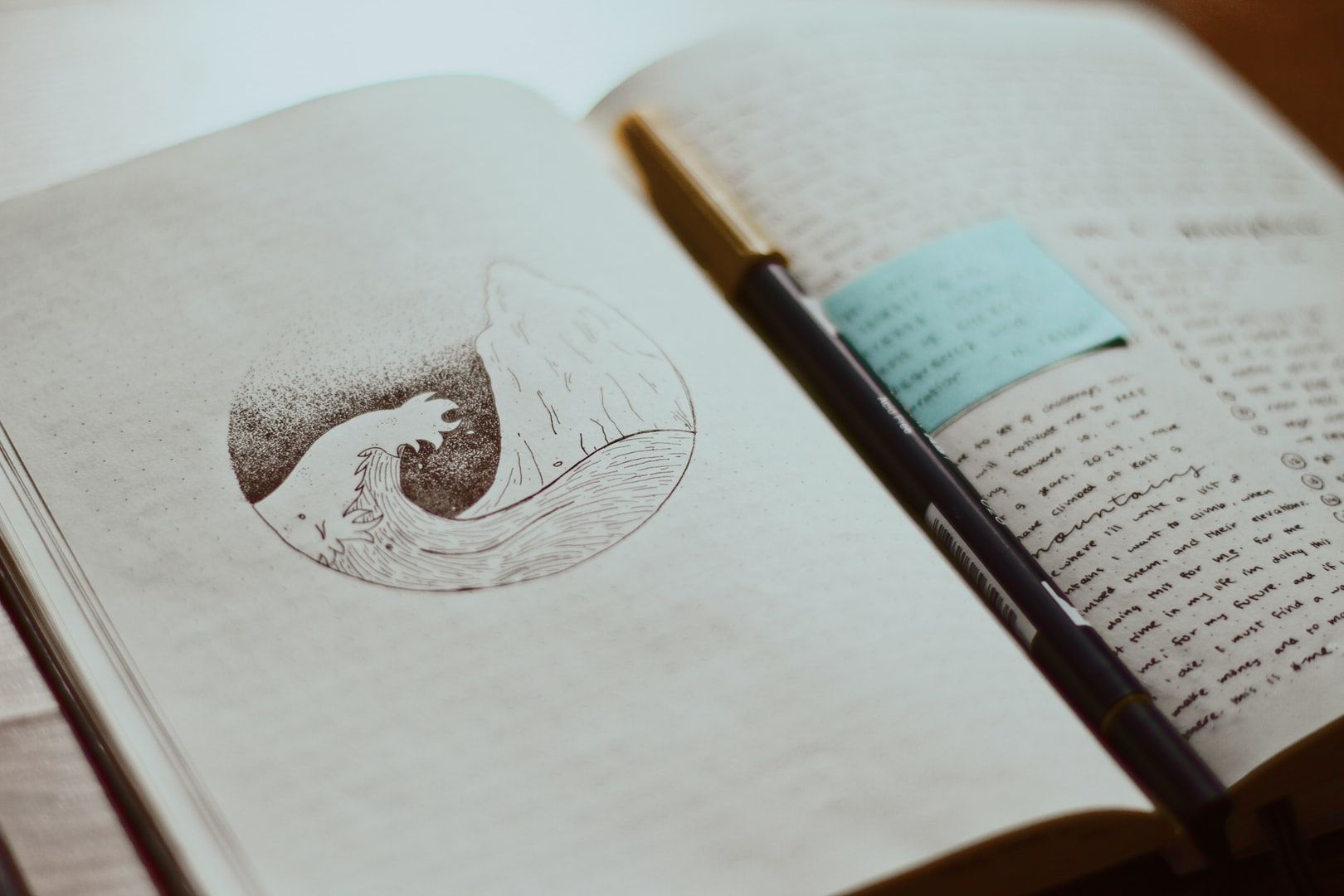
“Walking simulators” are games that engage the player through interactivity and freedom of experimentation. They differ from traditional videogames in that the ‘goal’ is to simply enjoy and be immersed in the experience of the interaction, sometimes to be told a story, or to explore and discover a crafted world. They are a relatively new genre, and there is still a lot of innovation happening in their design as more and more are released, but the core gameplay tends to always centre around an active engagement in either a world or a story. The directly interactive nature of a videogame enhances the player’s opportunity to be immersed in either a narrative or a world, often both.
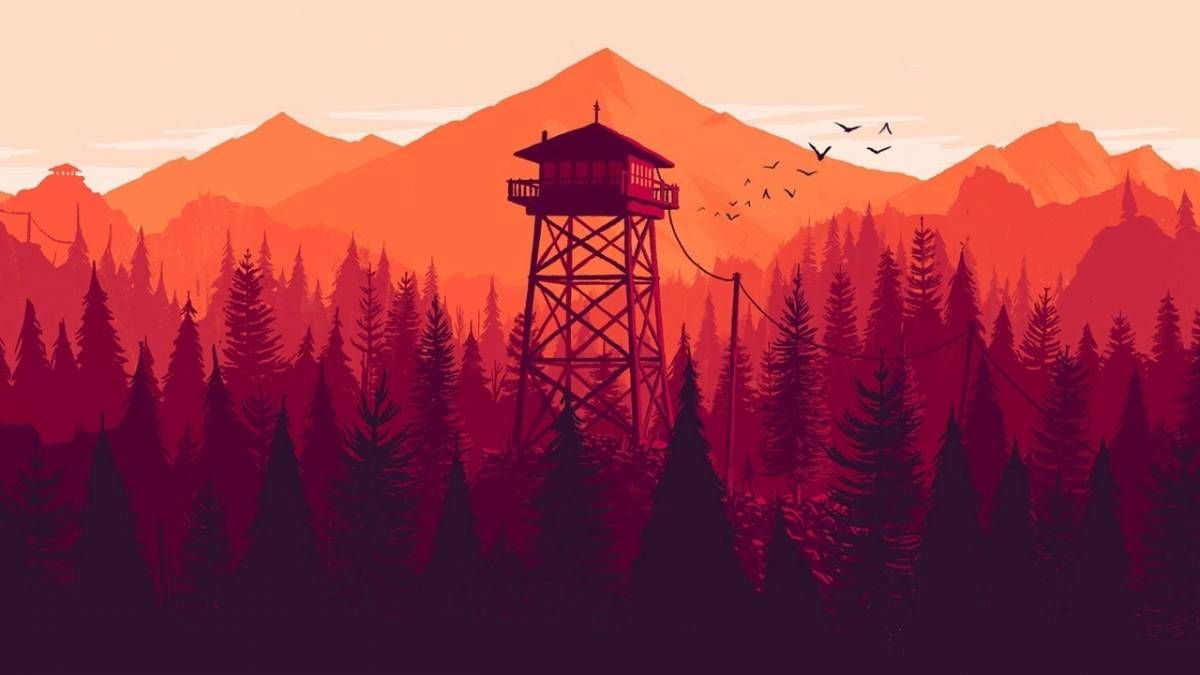
In the last and current year of my MSc, I have created a storyboard for ‘The Wanderer’ -- a video game that guides the player through a variety of calming scenescapes, prompting the player to write in a customisable journal with a variety of CWTP exercises. It puts the player in a landscape to explore, discover lines of poetry and prose which they can choose to keep in their journal or discard. A series of virtual worlds that are all unlocked from the beginning with no need to complete, with no unlockables and hopefully, no anxiety and only elements that encourage positive feelings for the player’s wellbeing.
The storyboard has been presented twice to a Focus Group made up of CWTP and Game Design experts, and has been rewritten and designed to a point where, really, it is just waiting to be made, which is unfortunate for my lack of videogame programming skills.
There is no videogame without a concept or story, and ‘The Wanderer’, like many other games, is encouraging the player to write their own. I personally have a strong belief in the neurological therapeutic and physical benefits to playing videogames, and there are also a lot of studies to back the beliefs up. I have wanted to attempt this study to see if the video game format could be a suitable replacement or alternative for a writing group. I believe there would be a market for players of this game, which could differ from those usual attendees of a writing group therefore growing the audience of CWTP participants. I would love for ‘The Wanderer’ to actually exist, and it is my mission in the next few years to see it realised. So watch this space, and I can’t wait to give you a safe and wonderful world to explore and to write in.
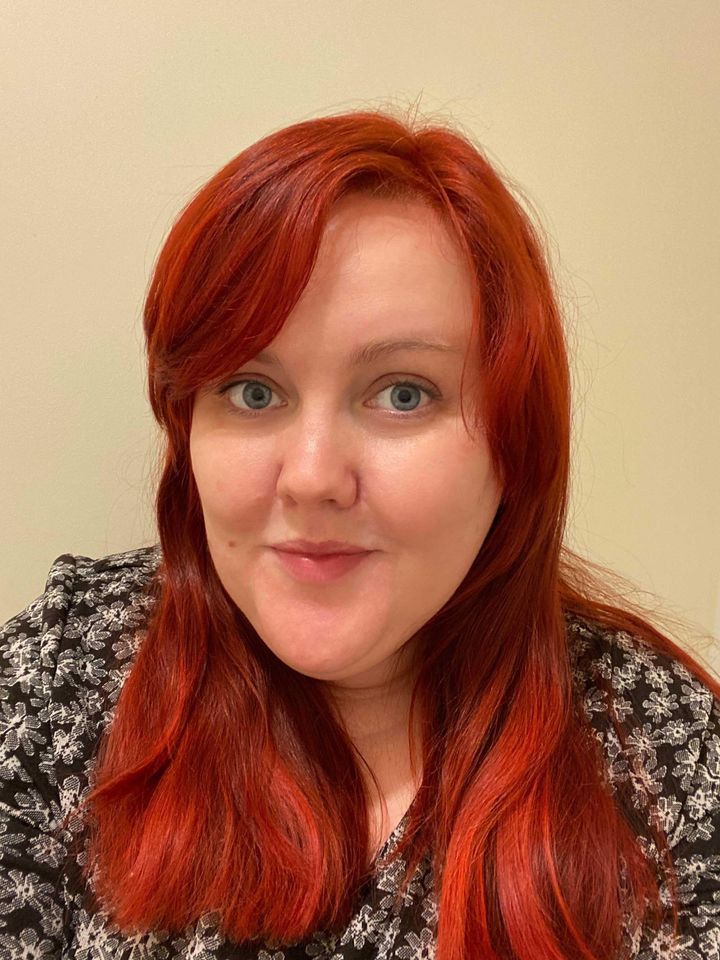
Bethan Rees currently lives in Swindon, UK but originally comes from Neath, South Wales. She is in her final year of studies for an MSc in Creative Writing for Therapeutic Purposes. She has had poetry published in a variety of poetry presses and also dabbles in voice acting. She can be found on Twitter via @bethandoeswords
Deborah Southwell
UK/Australia
May 2021
In early 2019, I had my first experience of a megagame: ‘Relics of the Fall’, a game exploring how the different societies in a post-apocalyptic world interacted. In ‘Relics of the Fall’, I was the only female player. There was one other female in the facilitating team.
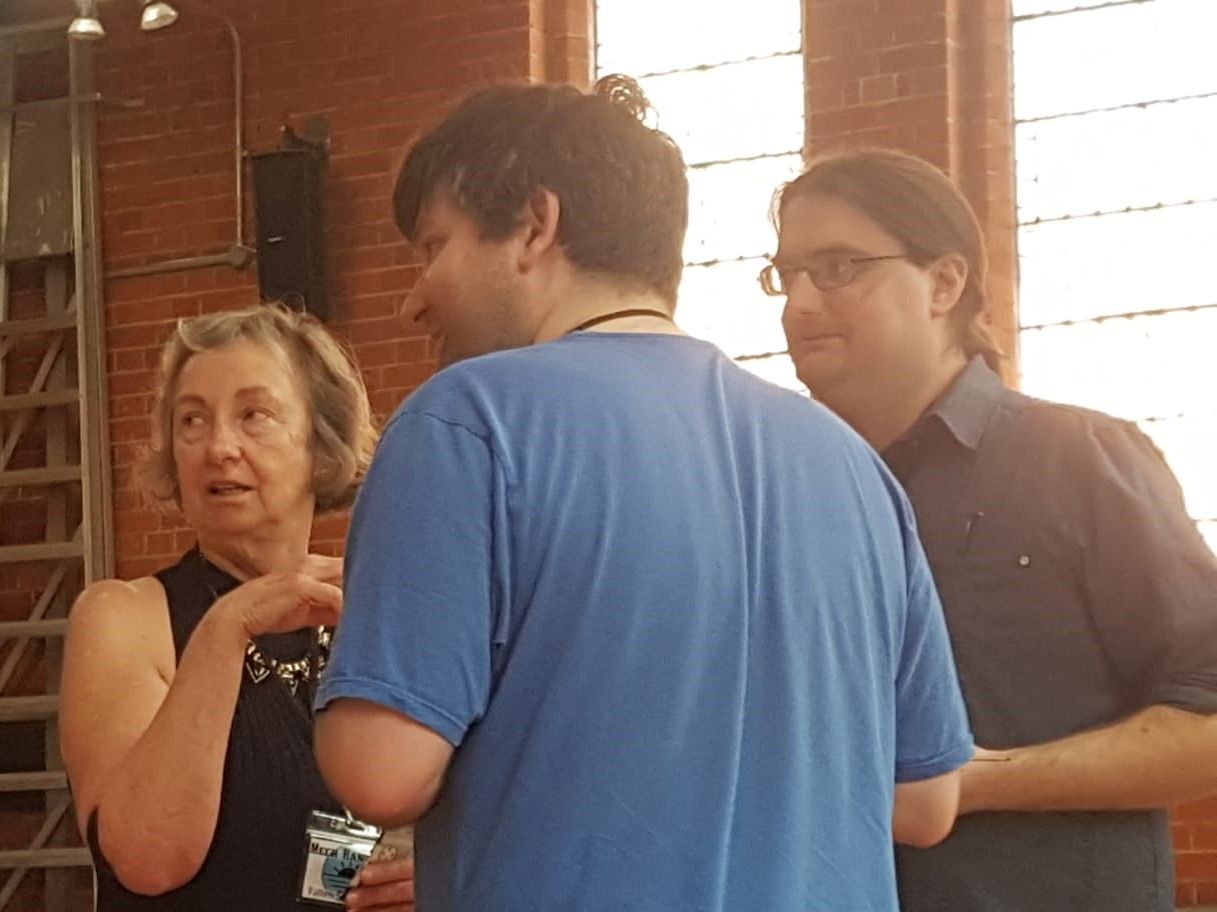
Megagames are large multiplayer games involving 30-300 players in the same game. They cover all sorts of subjects, politics, history, science fiction, historical fantasy – and can last for half a day or several days. They can be held in one room, or in multiple rooms around the world all connected online. I find it a fascinating world.
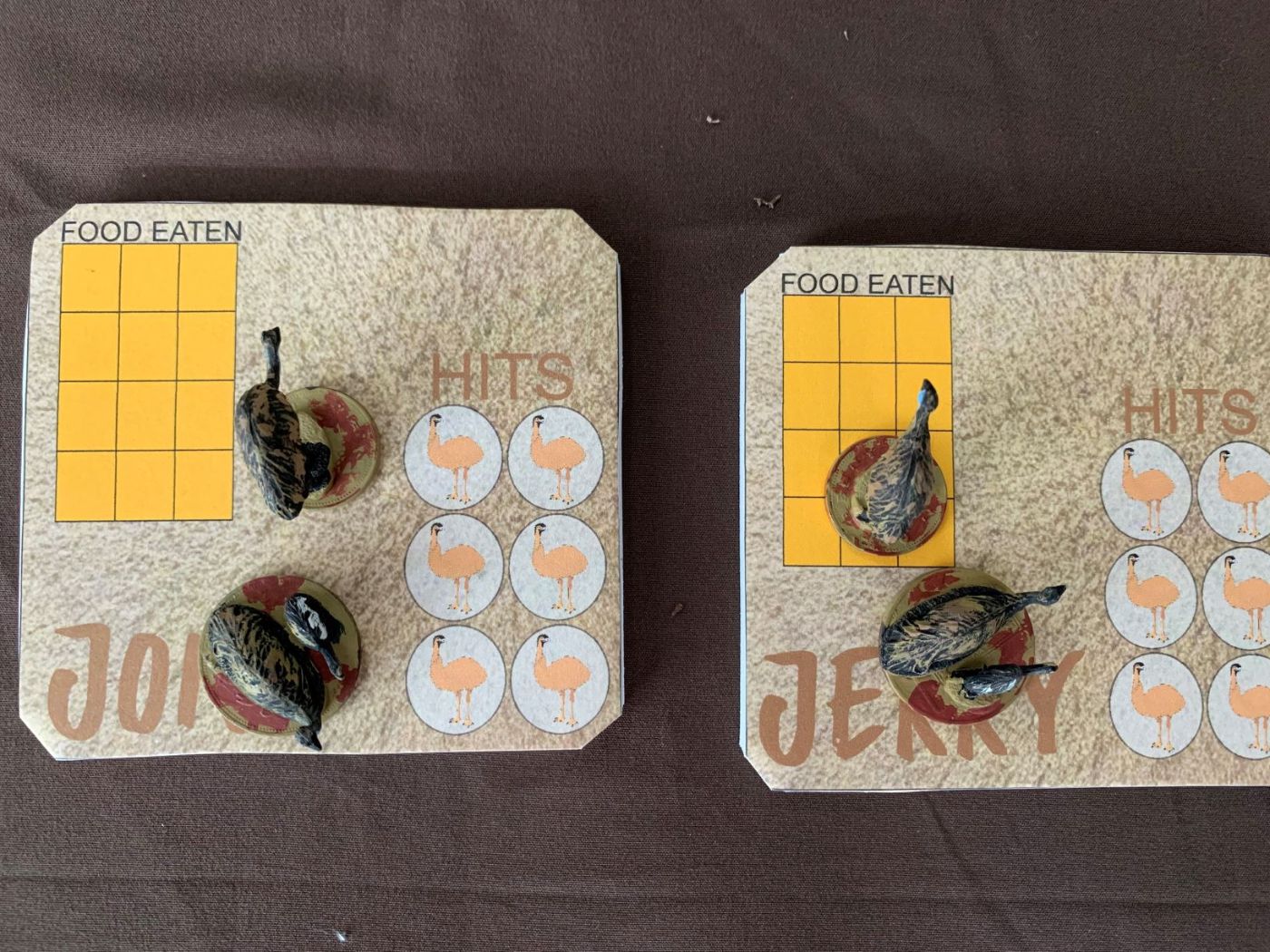
Since then, I have played more megagames, occasionally with a few other women also playing. I have participated in facilitation teams for several different megagames. With the COVID-19 lockdowns, I assisted with the transition from face-to-face games onto the online environment.
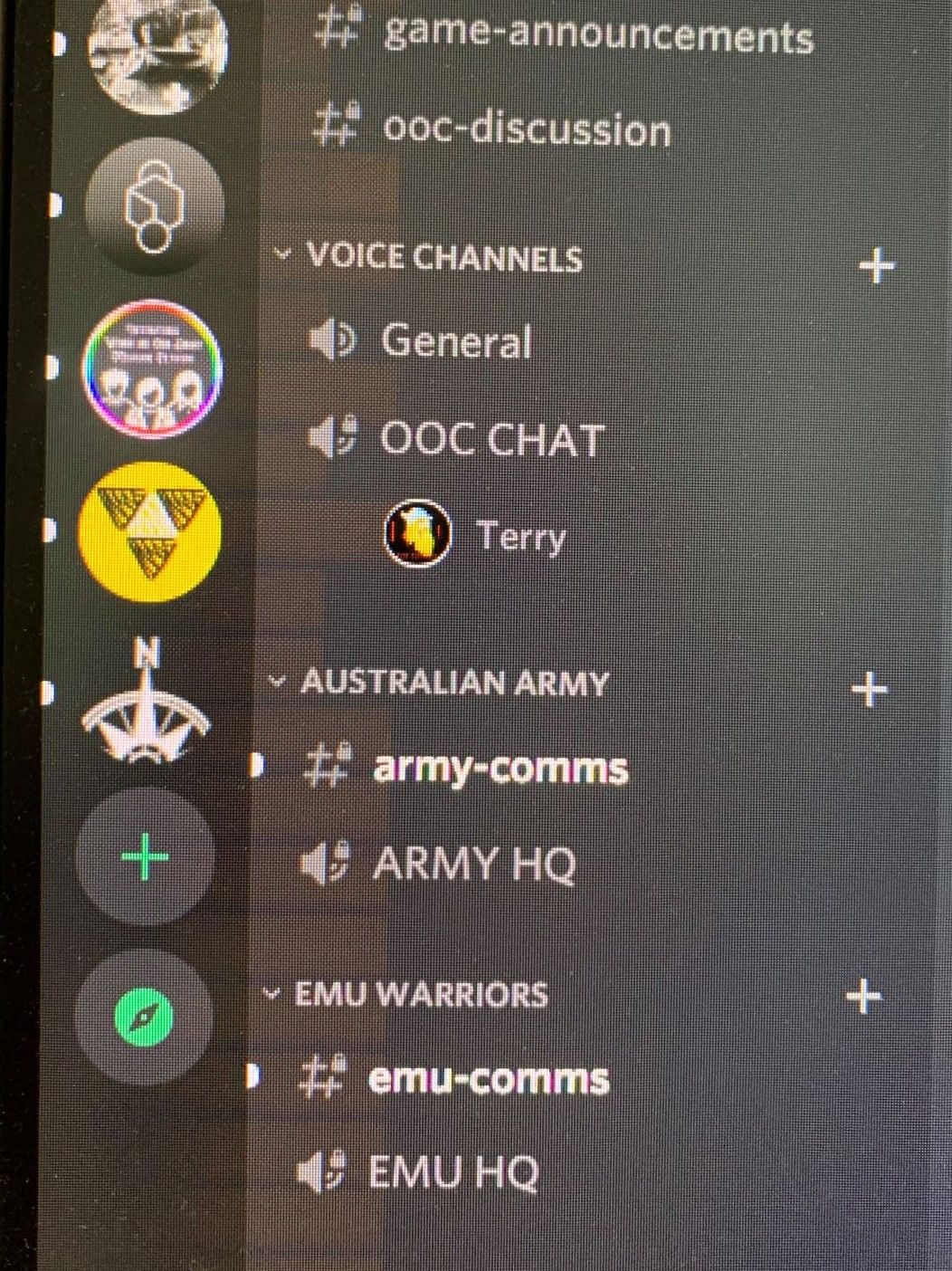
I became involved in a game design group, the Chestnut Lodge Wargames Group (CLWG). I am the only female attendee. The men are not against women becoming involved; they are interested in how to be more inclusive.
I completed a short course in game design and play tested my own game, ‘Emu Wars’, with players from CLWG – still all male players.
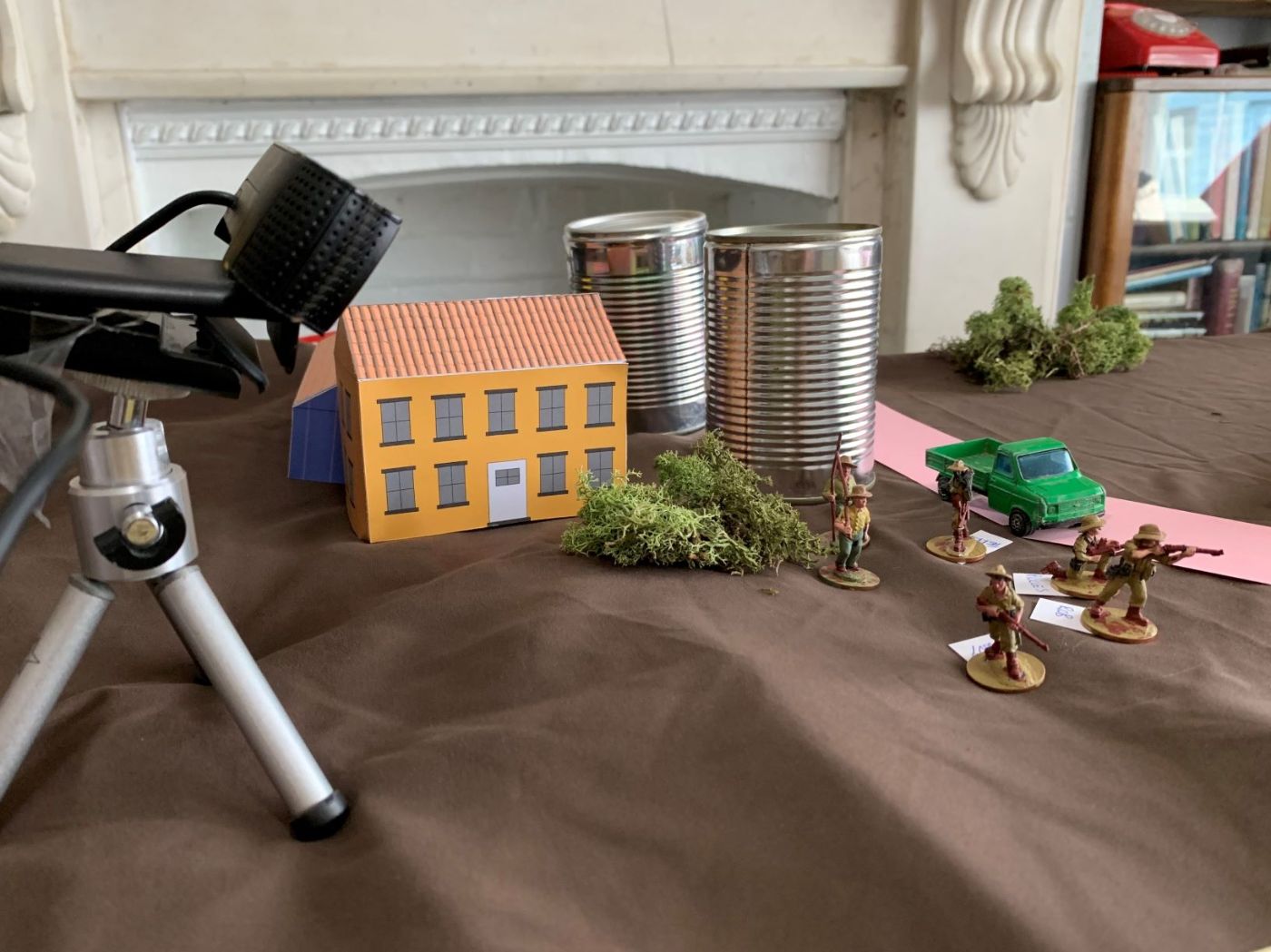
So, I found myself presenting a session for the Annual CLWG Design Conference 2020: ‘Exploring female roles in wargames, megagames, and role playing’. Earlier this year, I was asked to present a seminar on ‘We need to talk about women in wargames’ to the Megacon Conference (UK) 2021. I will also be presenting a seminar at the professional wargaming conference Connections UK 2021 on a similar topic.
I suspect I was asked because I turn up.
But it was also important to me that my listeners knew where I was coming from, what has shaped and influenced me over my lifetime, and that I can only give one perspective of the topic. I am conscious I can only speak for myself and not on behalf of others, so many of whom do not have a voice.
I speak as a middle-class, white, CIS gendered, 65-year-old woman. I am a Westerner – a dual citizen British-Australian). As such, I am very privileged. I cannot speak for women who are Black, Asian and minority ethnic, for women of other Western countries (British/American) or other national rankings. I cannot speak for young or middle-aged women, for LGBTQI women, for women who are working class/upper class or any other social or cultural ranking. I can share my story but I cannot generalise it to others.
Perhaps, as you read, you will identify with some parts of my story but not with others.
I have two sisters and two brothers, all younger than me. I have one daughter and three sons, three granddaughters and five grandsons. My grandchildren are impressed I play Minecraft.
I have a great grandfather killed in the first world war and an uncle killed in the second world war. I have a brother who was in the Special Air Services (SAS) Regiment in Australia and a nephew deployed to Afghanistan.
I speak as a woman who has experienced domestic and religious abuse.
At primary school, the other girls and I played on the bitumen netball courts at school while the boys had the marble patch and the two big grass ovals to play. My grade 2 teacher had to resign when she got married and we had a replacement teacher.
In my first year of high school, I witnessed the change to women teachers getting equal pay with men. Women were also allowed to stay teaching after they married. In the same year, I witnessed indigenous Australian Aborigines, both male and female, being allowed to vote for the first time.
I watched my high school peers hang their bras outside the home economics building as a statement of women’s liberation and then watched the male deputy climb up to remove them from the building. I was not allowed to do technical drawing at high school because the girls did home economics – even though I was already running the home for my sick mother and making my own clothes.
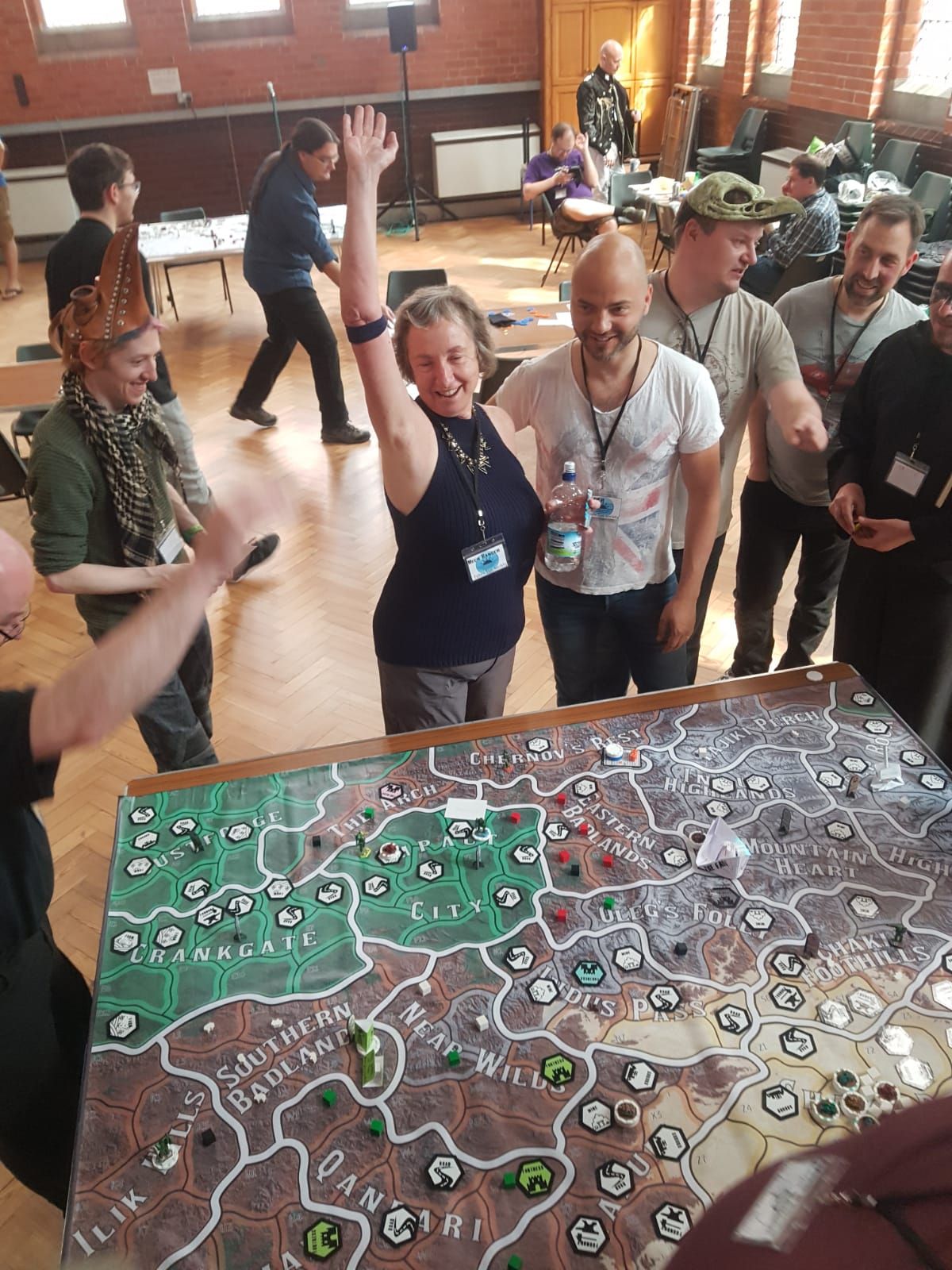
I returned to work after a 16-year gap with children and rose to senior leadership in higher education in the following six years. At the same time, I studied and completed qualifications up to and including a doctorate. My doctorate focused on female leaders in Australian higher education.
In many ways, I straddle the radically different worldviews of a middle-class westerner in the 1950’s and 2020’s and everything in between.
I can give one perspective.
What about the other perspectives? How do we hear and listen to them? How do we encourage others to listen to them?
And how do we take action to have more female perspectives and involvement in our gaming?

In early 2018, Australian Deborah Southwell left home on an adventure that was to involve writing retreats in Morocco, Ireland, and Romania, studying creative writing for therapeutic purposes in the UK, spending six months in Argentina learning Spanish and re-learning how to ride a bicycle somewhere along the way. She made it to the UK where she fell in love with a serious game designer, which wasn’t part of the plan, then a pandemic and lockdowns swept the world, which means she isn’t going anywhere in the near future except walks down to the sea at the end of her street.
Victoria Bennett
Cumbria
April 2021
In 2014, I received a Literary Platform Digital Writing Bursary to explore how poetry and Minecraft could work together. Collaborating with artist, Adam Clarke, we started off experimenting with giant letters, sound blocks, floating text and other mechanical features, looking at ways in which the game could hold words. We loosely connected the way a poem is built, and the way the blocks are used to build in Minecraft, noodling with the idea of ‘stanzas’ and ‘rooms’ (the rough translation of stanza meaning ‘room of the poem’). Somewhere in our conversations, we hit upon the idea of the labyrinth as a way of tapping into the open-ended sandbox nature of the game. We were enjoying pushing the boundaries between literature and gaming.
Then life hit hard with the completely unexpected.
At the end of 2014, my mother was diagnosed with malignant mesothelioma, an incurable and aggressive cancer caused by asbestos exposure. Everything changed in the short space of a few words. With a prognosis of less than twelve months, and the knowledge that she would need increasing care, my focus changed overnight. We moved in with her, and so began our final year together.
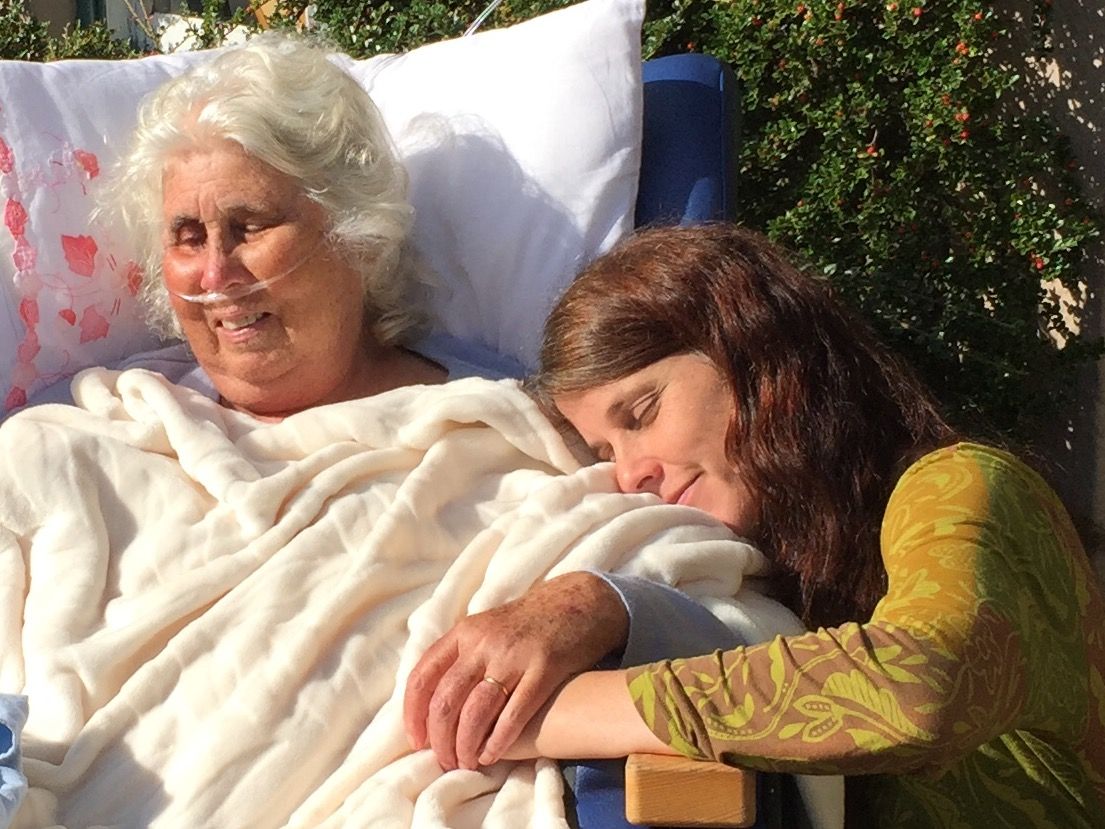
Alongside this seismic shift, work had to continue. The bursary was time-dependent and required us to share our explorations, but what would we do now? Knowing that I would find it impossible to switch off from what was happening in my world, I was faced with an important and challenging question: can I make a Minecraft map about dying? Can a video game like Minecraft expand to hold a narrative like this? Can something as personal as death and losing and grief be explored within a game in any meaningful way or would it just be derivative and disrespectful? What does it mean to ‘play’ and can ‘play’ accommodate the hard stuff of life? Can we talk about cancer in a game? In 2016, Numinous Games would do just that, in the beautiful That Dragon, Cancer but back in early 2015, it was still something seen as relatively taboo.
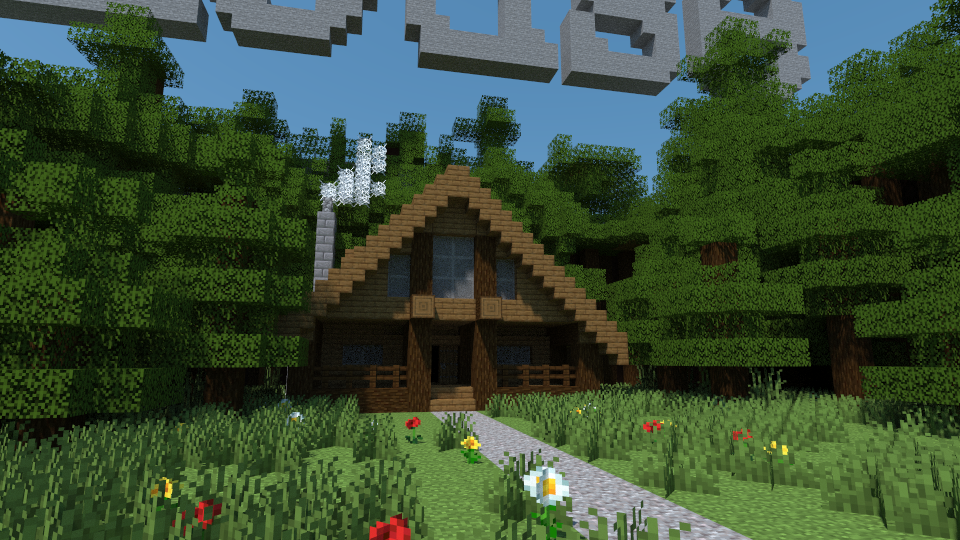
In the end, it came back to the rooms and labyrinths. As I shared in my mother’s last months, we spent the days talking about her life, all the places she had travelled, and our lives together as a family. Often, we would walk around the house and my mother would pick up objects to tell the story of where it had come from, and how it came to be in her life. It was as if she was revisiting her life, room by room, packing it up and closing each door.
As she grew weaker, so her ability to move from room to room grew less, until eventually she struggled to even get from her bed, and the waking hours were replaced more frequently with hours of sleep. As her body gave in to the cancer, she was still present in each room — her life, her stories, her expression of who she was and how she had lived. Just as we knew the moment would arrive when she was no longer living, so I knew too that one day, I would move through these rooms and close up these doors for a last time.
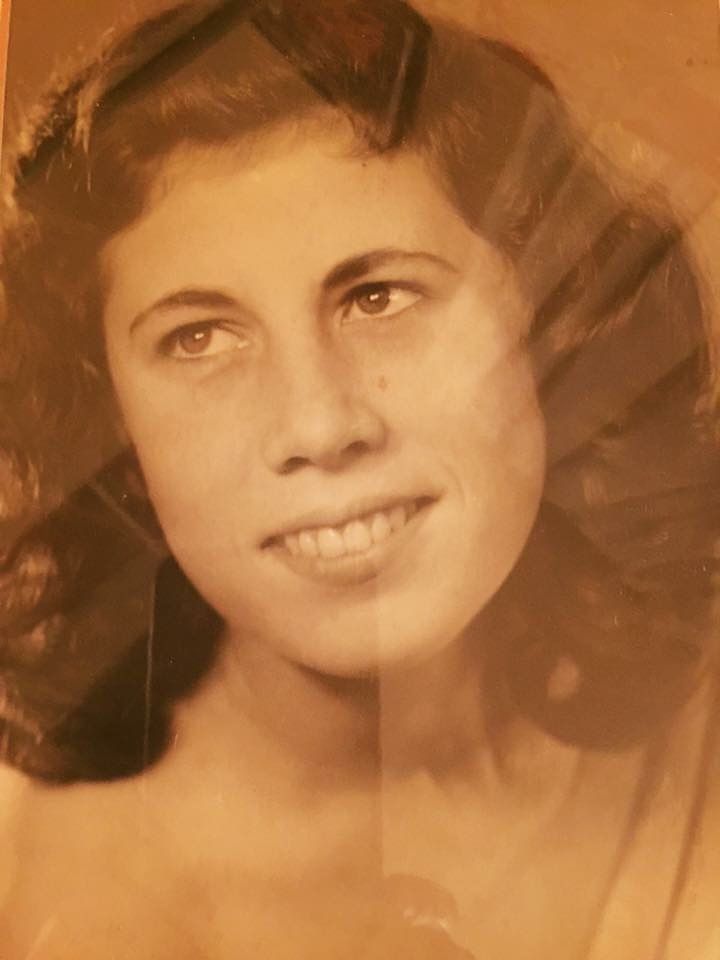
It was this act of closing down a life became the foundation for My Mother’s House. It was, and is, the story of my mother’s life, and her death. As such, it is an intensely personal piece of writing. To take that into the untested territory of a Minecraft map, was terrifying but that is exactly what we decided to do and, as with most things in our lives, it was our son who helped us make that leap of faith. I needed to find a space to let him explore his feelings around what was happening around him, about terminal care and loss and grief. It needed to be somewhere he felt safe and confident. Through play and the platform of Minecraft, I was able to share some of the feelings I had, and he was able to explore and add his own.
Because of the demands of the bursary, although the poem takes itself to the end of a life, the map was actually finished before my mother died. It was a precious and powerful moment, when I sat down with my 83 year old mother and my 7 year old son, and we explored My Mother’s House together. We cried, and my son delighted in discovering hidden objects. Together, they added in some of their own, and my mother told her grandson some of the stories of her life. At the end of the map, we cried and my mother told me to open up the doors after she had gone. This game, ordinarily seen as something for children, had given us all a safe space to talk about what was happening; a safe space to talk about dying and grief.
That was in 2015. Since then, the map has featured in The Guardian, as part of the “Groundbreaking Games” series on Gimlet podcast (NYC), featured in the 2016 Top 5 Minecraft Maps, and been shared at various conferences and festivals. I have had people come up to me and share their own grief stories, including young children. And it gives us a digital legacy we can return to, a holding space for the stories of my mother’s life.
My Mother’s House was the beginning of a journey for me, into how games and immersive, playable spaces can be used to share our grief stories, both personal and ecological. How do we find a way to share our grief stories in a meaningful, purposeful way? How do we find a language that responds to a dying planet? My current project, Human Geographies, supported by the Arts Council England, explores narratives of absence through poetry, memoir, and VR/AR. I am excited to see where this work goes, and will be setting up a series of salons soon, to explore these questions with writers, game developers, and those with an interest in palliative/bereavement care/experience.
As we navigate our intimate stories across digital divides, I hope this work will encourage a creative dialogue around how poetry and VR/AR can engage us in sharing authentic narratives around our individual and collective loss.
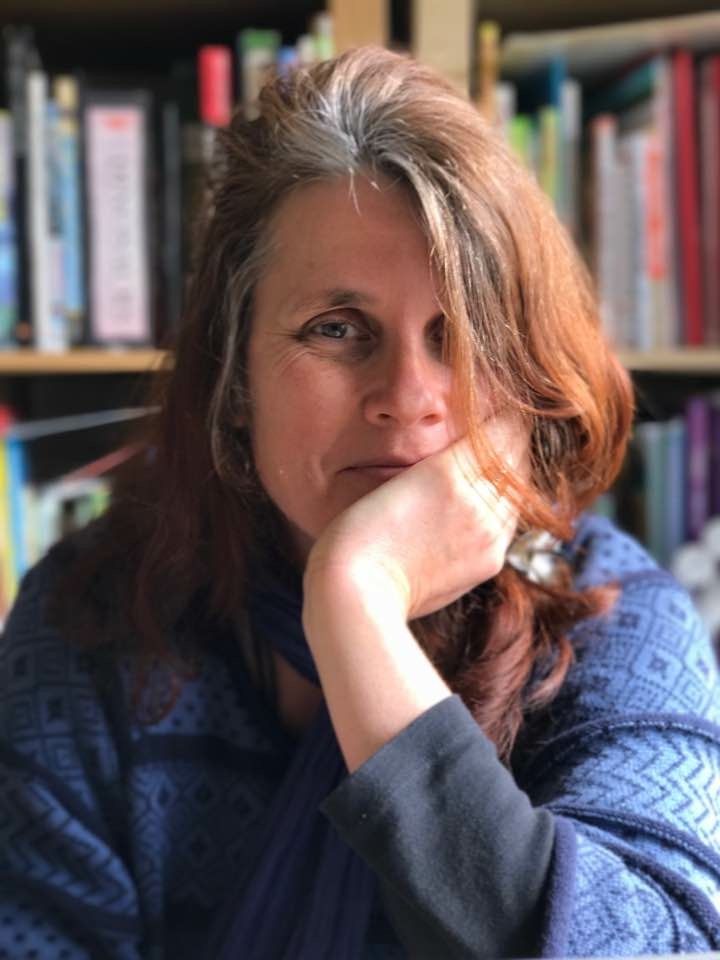
By Jean Leggett
Toronto, Canada
March 2021
They say hindsight is 2020, that looking back, we’re able to see things with greater clarity. Looking back at the year that brought us a global pandemic, vitamin D deficiencies, and Animal Crossing, I interviewed and coached over 250 game developers globally in my capacity as an indie game dev and career/leadership coach. What I discovered gave me hope for the future of our industry.
Heard. Understood. Acknowledged.
You may have heard this in military movies - “HUA!” Soldiers bellow to their commanding officer, translating to “I heard your command, I understand what you are asking of me, and I acknowledge responsibility for following/performing the command.” There’s a lot to be gained from applying HUA to human relationships - we desire to be Heard, Understood, and Acknowledged. What happens when we’re not?
What I witnessed with my female and non-binary clients, across the spectrum of age, experience level, and game development field, were countless examples of being gaslit, diminished, patronized, discriminated against because of gender/race/age, and being unrecognized for outperforming their male counterparts. Leadership denied promotions and opportunities for hard working developers to promote yet another Chad, a white guy who they’d become chums with. Far from feeling heard, understood and acknowledged, we’re losing incredible talent because why would they want to stay in such a toxic industry?
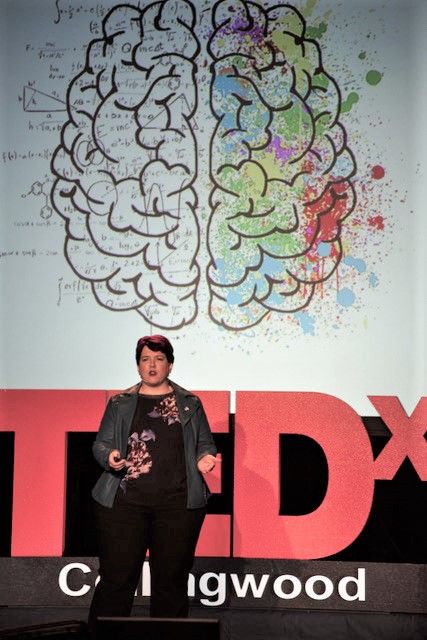
VIP Pillars
We have problems, real problems. We’re overrun by dudebros (71% of game developers are men) who found funding (less than 2% of venture capital funding goes to women-led companies, outside of games) and are building games studios with little to no experience as leaders. Being bossy doesn’t make you a leader, it makes you a tyrant controlling payroll. It doesn’t make a lot of sense when you consider women gamers make up 46% of players. There should be more of us making games.
I wanted to see what was possible - could we radically change how women and non-binary game devs talked about their skills, experiences, and accomplishments in their resumes? Could we create opportunities for them to become their own best champion and front load their career materials, forcing hiring managers to see them for all their potential and glory? I approached this by throwing away the patriarchal chronological resume - it has been shown that it disfavours women and minorities because of gaps in employment (child rearing, family obligations, etc) and education. Instead, I designed with core pillars in mind - what do we need to convey and convince someone to hire us? The VIP pillars were born: Validation (prove you can do the job you’re applying for), Implementation (how do you implement these skills), and People (how do you communicate/lead). Each career track has its own specific pillars - for example, a narrative designer might have Storytelling, Game Development, and Communication as their three pillars.
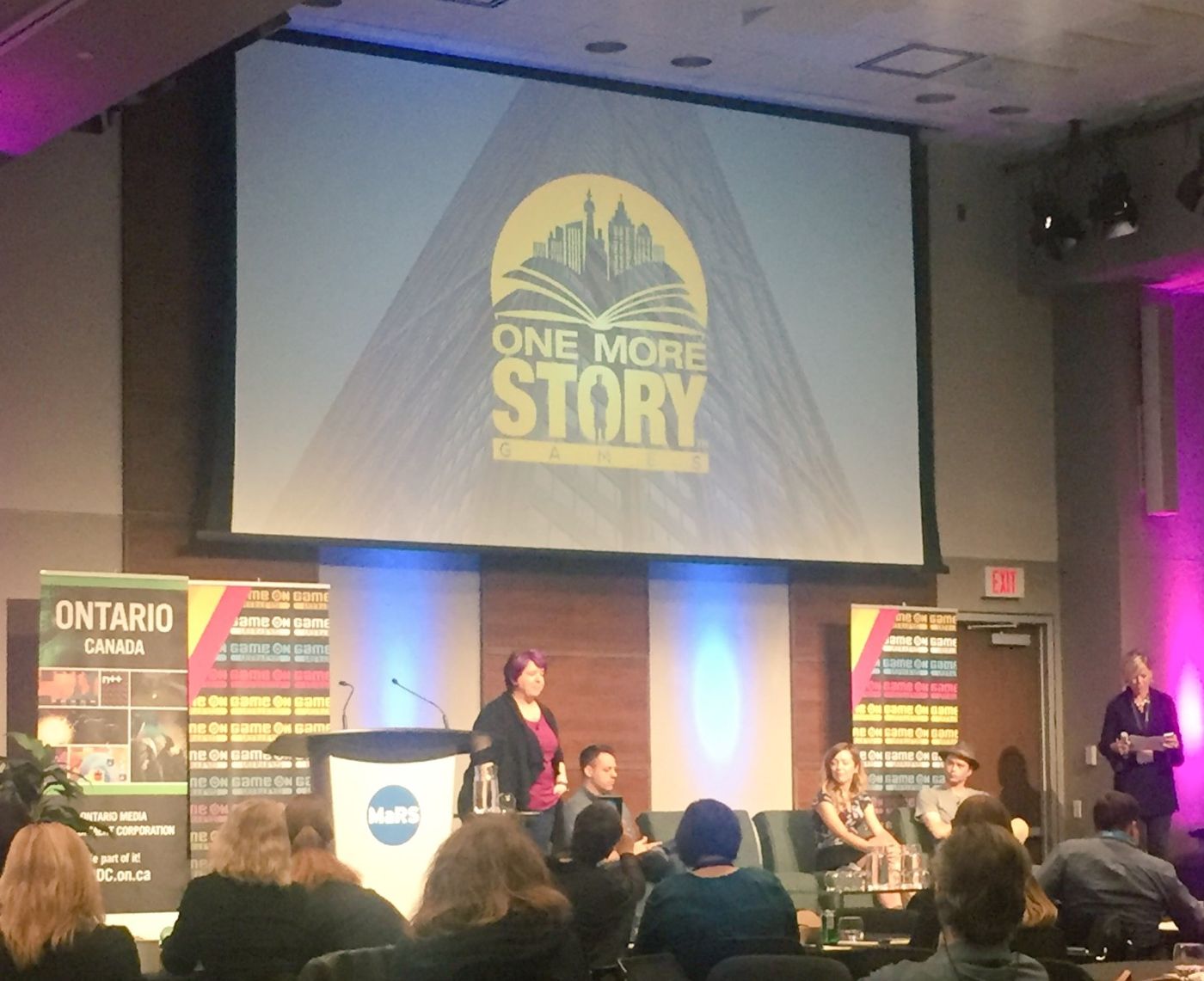
Does a resume really change things?
Does wearing your best pantsuit make you feel 10 feet tall? When we can see and own our brilliance, we are often motivated to find opportunities that make us feel heard, understood, and acknowledged. Instead of having a manager stuck in time, seeing you as the same person you were three years ago (like your Aunt who thinks you’re still 12 years old), you can break free from people who don’t see your success or potential.
Speaking to your values is also really powerful. Getting curious about what your drivers are - communication, empathy, collaboration, etc, and claiming that language on your resumes will allow you to screen for kindred in your next role.
Heart-centered Leadership
One brilliant client, Lauren Ashlee Comp, was ready to claim her position as a lead producer. Her pillars were Leadership & Strategy, Creative Direction, and Operational Proficiency. Her bio blurb proudly declared she was about “leading teams to work consciously with their hearts to smash expectations and deadlines.” BAM! Her resume spoke of empowering teams and cultivating team autonomy. Hiring managers hadn’t seen anything like this and there was fierce competition to land this brazen, heart-centered leader for a senior producer role. Getting clear about her values and what she valued in her workplace meant she activated her internal compass, letting her know when she’d found home. Home is where the heart is.

An Expanding Heart
I’ve had the privilege of helping women and non-binary individuals to put their hearts and minds to paper, conveying their authentic selves, and empowering heart-centered folks to connect in the industry. As with hearts that are broken, we’ve been diligently repairing what is cracked with the Japanese art of kintsugi - filling the fractures with gold - and creating a more expansive industry and creating more room for inclusion, diversity, and a change in how we lead.
What I saw this past year was the real beating heart of games. We, women and non-binary game developers, are dreaming, collaborating, and building new and vibrant worlds where we’ve always belonged. With more of us moving up, gaining access to capital and the experience to run our own studios, we are shifting the balance.
The heart is beating louder. We will not be silent.

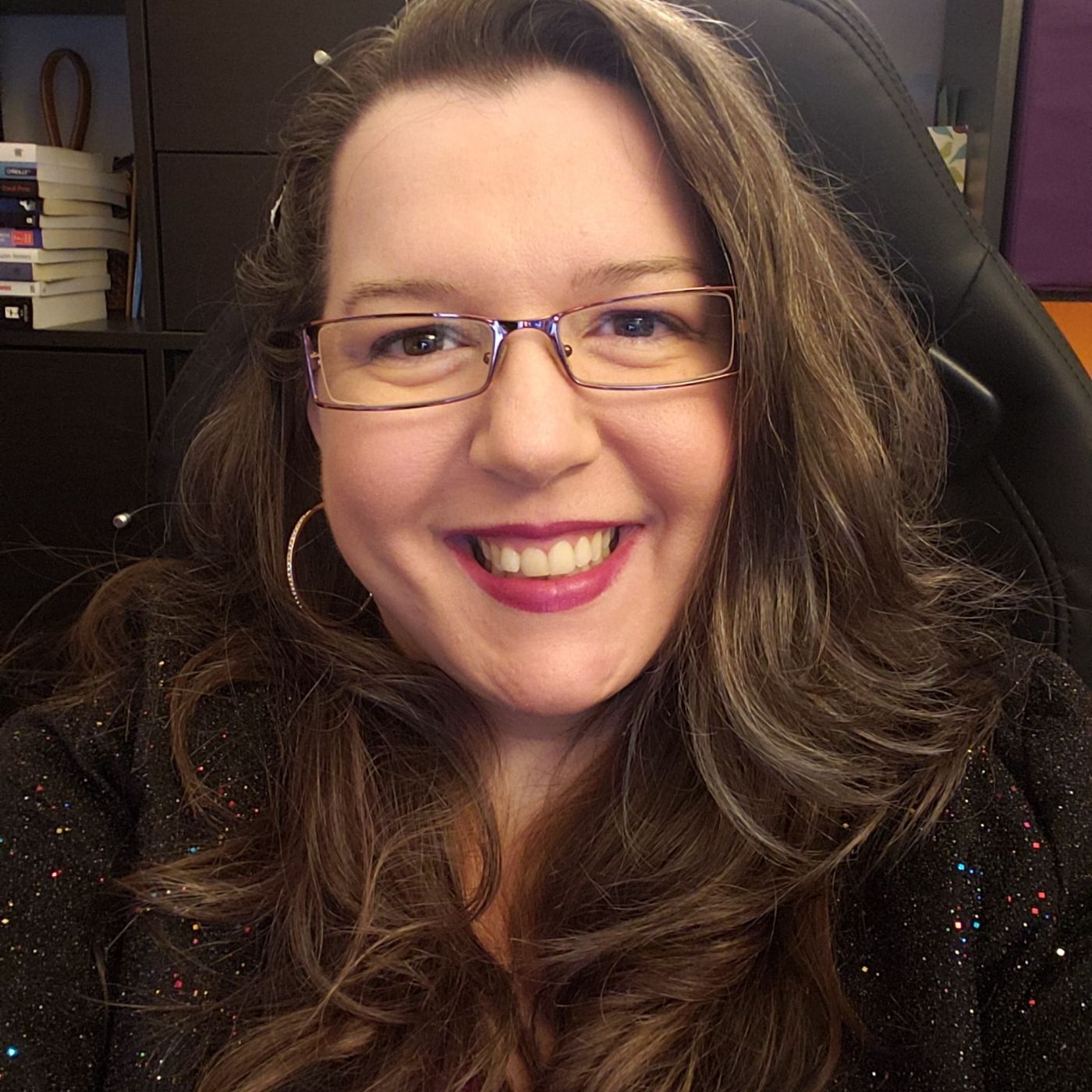
Jean Leggett is the CEO and co-founder of One More Story Games, a games & edtech startup with a simplified publishing platform to help non-coding storytellers as young as 8 create and publish narrative games. Jean is a certified professional coach, international speaker, and professor of narrative design. She’s the lead writer on a game adaptation of #1 NYT bestselling author Charlaine Harris’ Lily Bard mystery series about a sexual trauma survivor coping with PTSD. Jean has provided leadership and career coaching to over 300 game developers since 2018.
Written by Elise Cretel & edited by Iam Pace
USA
February 2021
My earliest tabletop gaming memories were with my grandmother. I was dropped off at my Gram’s house regularly. Her yard was shaded with towering trees and fragrant red tulips and popup lilies filled the garden.
Grandma’s house was always filled with the aroma of delicious homecooked food. After a meal, we would sit on the couch. She always asked if I wanted to play a game of war (cards) or a board game. I spent many hours of my childhood sitting on that couch playing with her. These were some of my happiest childhood memories and the start my journey in gaming.
The first DM’s Guild writing project I was invited to was Undermountain: The Lost Chambers, lead by Micah Watt of Pyromaniac Press. When I tackled writing my first two adventures, I was fortunate to have Micah and other team members show me the ropes. I learned quickly that designing games was quite different than developing content for my home games or writing short stories.
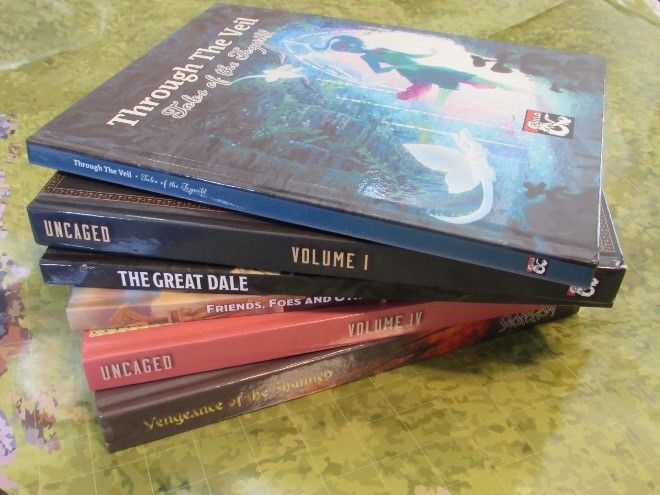
Creating adventures for D&D is its own science. It requires designers to craft engaging stories and evocative nonplayer characters (NPCs) in a small space. Designers must provide enough information to help Dungeon Masters (DMs) lead the narrative and keep players engaged, while leaving room for DMs to customize the game.
When writing adventures, designers must also account for a group of fighters, wizards, bards, and others who are contributing to the story in the game. They are not only reacting to plot hooks and encounters with ferocious dragons and goblin hoards, but they are also playing a role in the narrative of the game. They have goals designers are unaware of, which creates challenges unique to TTRPG writing. While designers can create individual objectives, obstacles, and resolutions for NPCs, they must also account for the whole group of players who all might impact the outcome of the story.
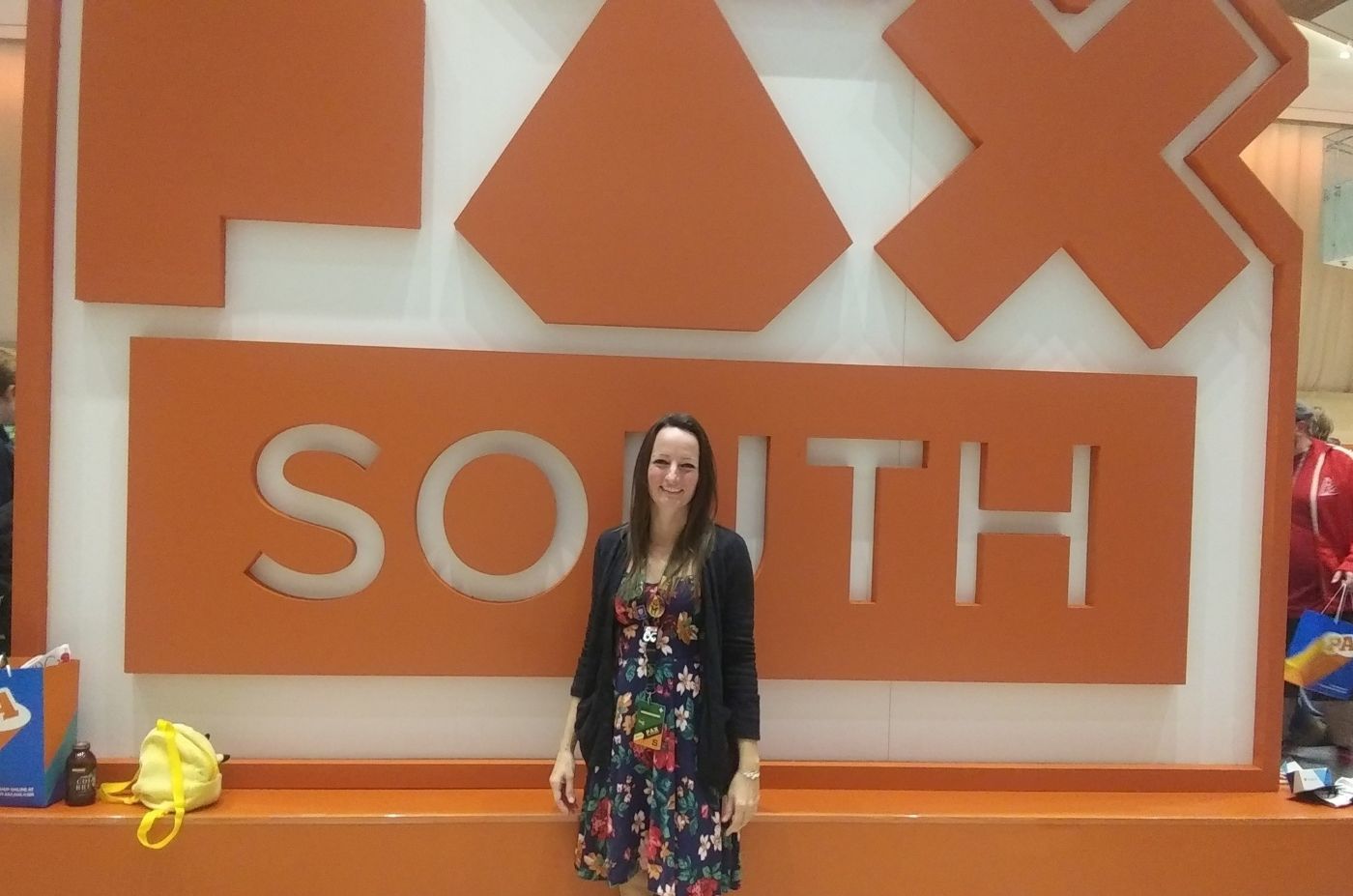
At some point, every author is inflicted with writer’s block. Last year I worked on an industry-level project. It was a fantastic experience, and I received a lot of insightful feedback that helped me see the blind spots in my writing. However, after this realization, I was in paralysis when it came to working on D&D adventures. I still participated in projects creating monsters and magic items, but I had trouble getting the pen moving when it came to finishing adventures. I felt like my adventures were not great, and I was afraid of making anymore content because I didn’t know how to make them better. I felt burnt out.
After taking a short break, I began deep diving into books on writing and game design. One resource I found was a game changer.
I was perusing the writing reference section at the bookstore when I saw a book titled Consider This by Chuck Palahnuik. At first, I thought someone had misplaced a book from the fiction or horror section. His books were the ones you didn’t want your parents to find out about back in high school. Why was the author of Fight Club in the writing reference section?
I picked up the book and discovered it was a book about his journey as a writer. I really liked his books when I was younger, so I bought it.
Most books about improving your writing are not the most exciting to read. I normally make a cup of tea before bed and then read a chapter. Consider This was the exception. It was one of the first books I read on the subject that was not only entertaining to read but seemed to have all the gems I was hunting for in one book. Before, I felt like I had to read a lot of fluff in other books to find only a few good bits. It felt like a lot of digging.
I started Chuck’s book and did the recommended reading and exercises. As I did so, I noticed I was regaining my motivation and ideas were beginning to brew again. I thought of ways to translate this information into game design and was finally pulling myself out of the adventure writing rut.
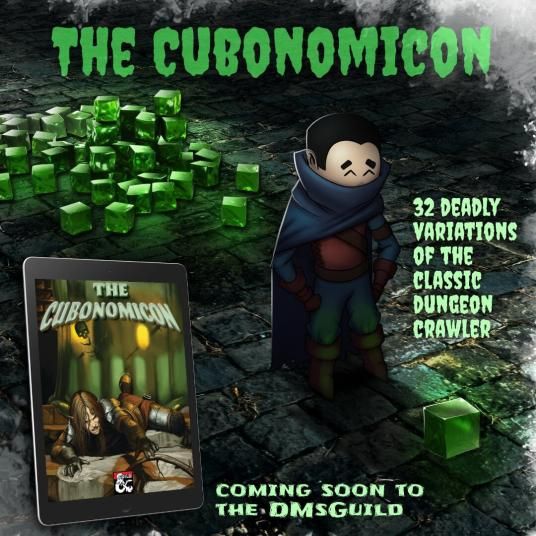
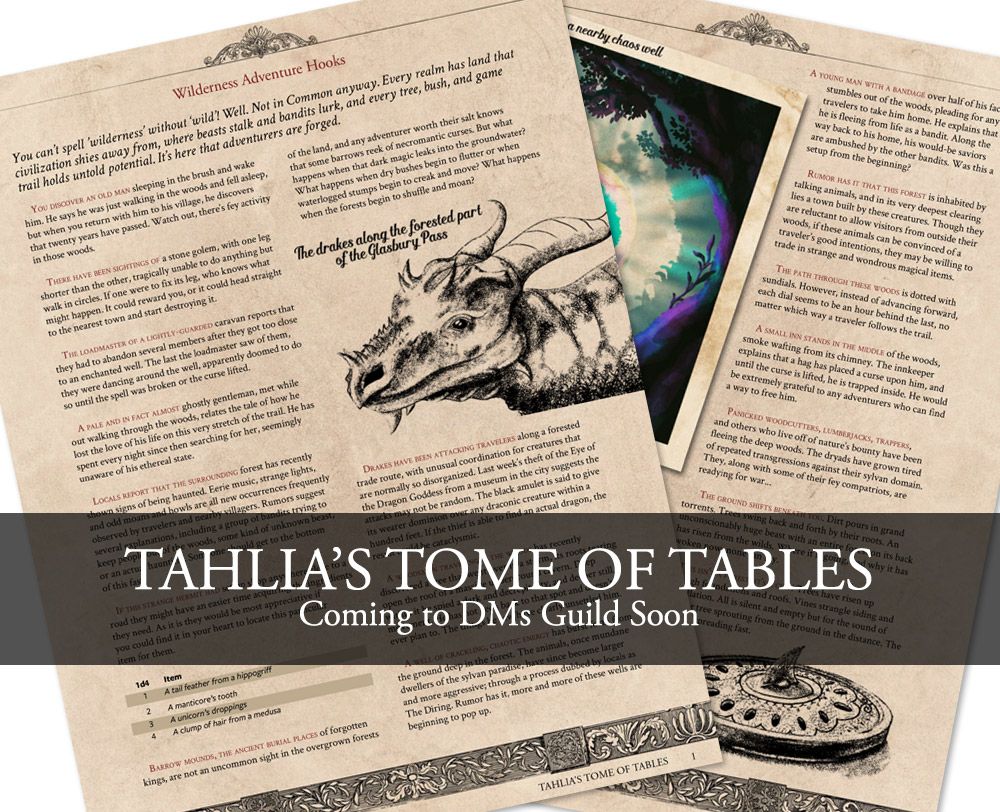
I still have a lot to learn as a creator, but I found the muse I needed to continue writing and improve my craft as a game designer.
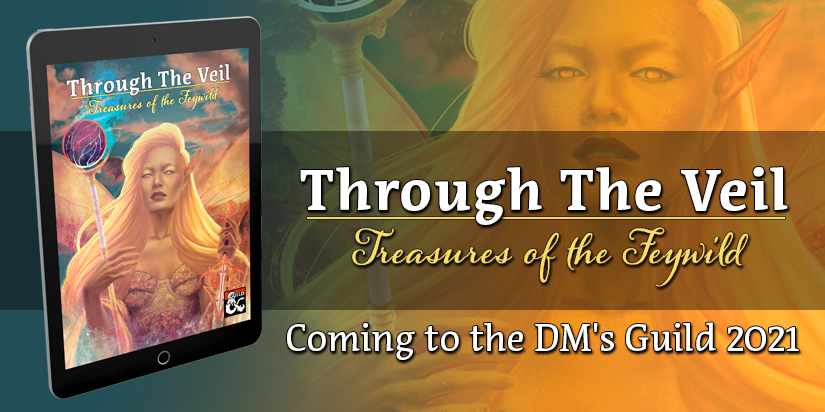
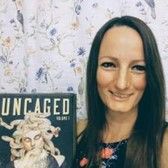
Elise Cretel is an Ennie nominated writer for the DM’s Guild and DriveThruRPG. She is the project lead of the #ThroughTheVeil Feywild series (D&D5e) and a contributing author of best sellers such as Uncaged, Blackstaff’s Tome of Wizardry, and The Great Dale Campaign Guide. She is also published on HitRecord and a contributor to the Emmy winning Create Together series. Find her on Twitter @DNDElise.
All related images reproduced with kind permission by the author (with the exception of Consider This)
By Crymson Pleasure
King of Prussia, Pennsylvania
January 2021
In 2013, I was in my 30s and continuing to get more into video games than ever before. Facebook pages were all the rage so I wanted to find one that reflected me. I couldn’t find one, so I decided to make one. I did see a lot of negativity around the phrase ‘gamer girl’ at the time and we wanted to combat that and give everyone a place to feel represented. We didn’t want to be over-sexualized. We didn’t want to be abused. We just wanted to play games.
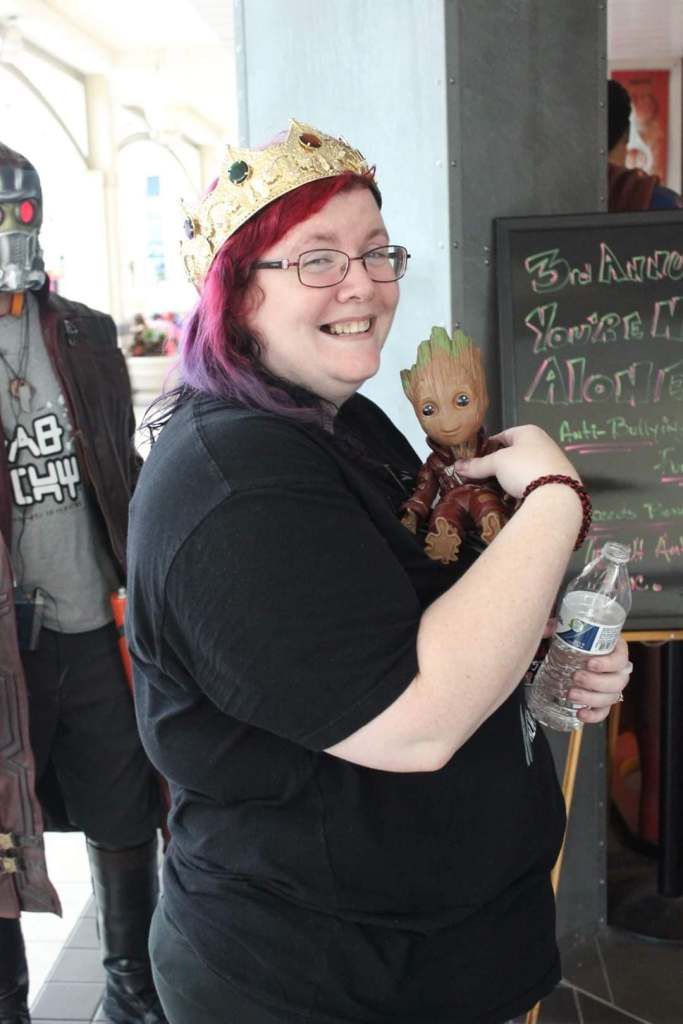
Seven years is a long time and it shocks me to even say that. Since then we have expanded quite a bit. We now consist of multiple genders, with a website for articles, a Twitch channel for our gaming and ttrpg streams, a YouTube for our past shows, and other shenanigans, all the social media, charity events, a discord server, and an online convention. We’ve been busy.
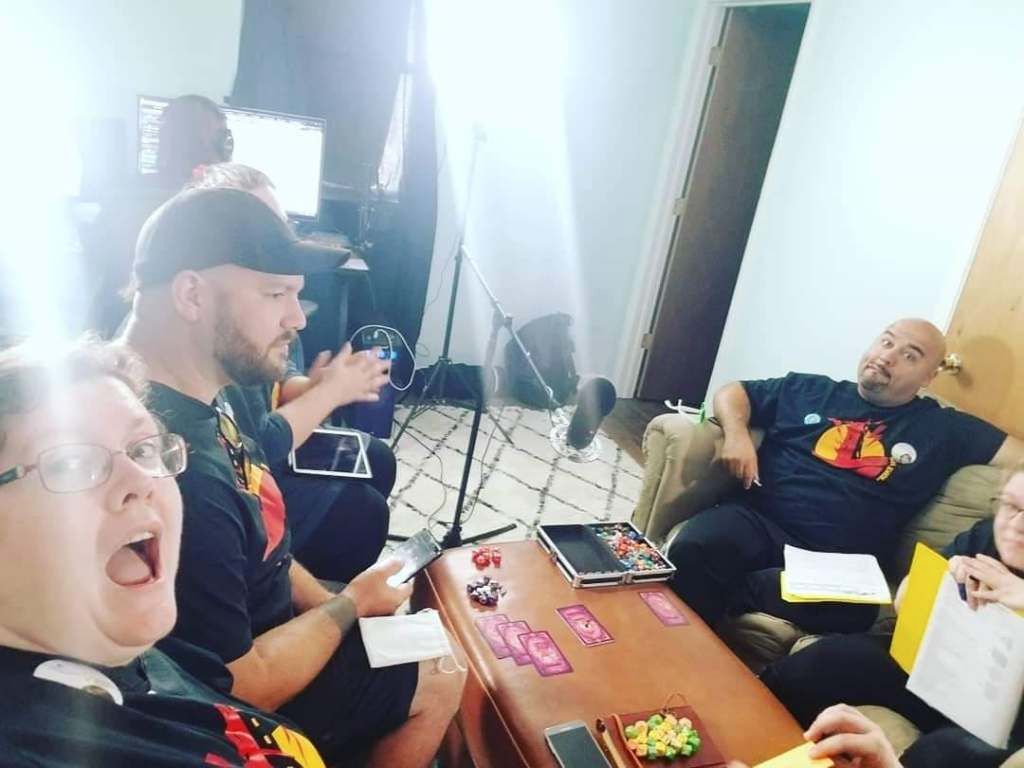
I want to say that I feel so lucky to be working with some of the most wonderful people. I have seen them all dare to do the unthinkable for others. Our charity events, Be Someone’s Superhero, You’re Not Alone, and Charities and Champions are special to all of us. Helping kids. Helping people, in general. We’ve dyed hair, eaten terrible things, pulled rabbits out of nowhere at the last second to make sure that we got it done, and entertained as many people as possible. We also get the message out.
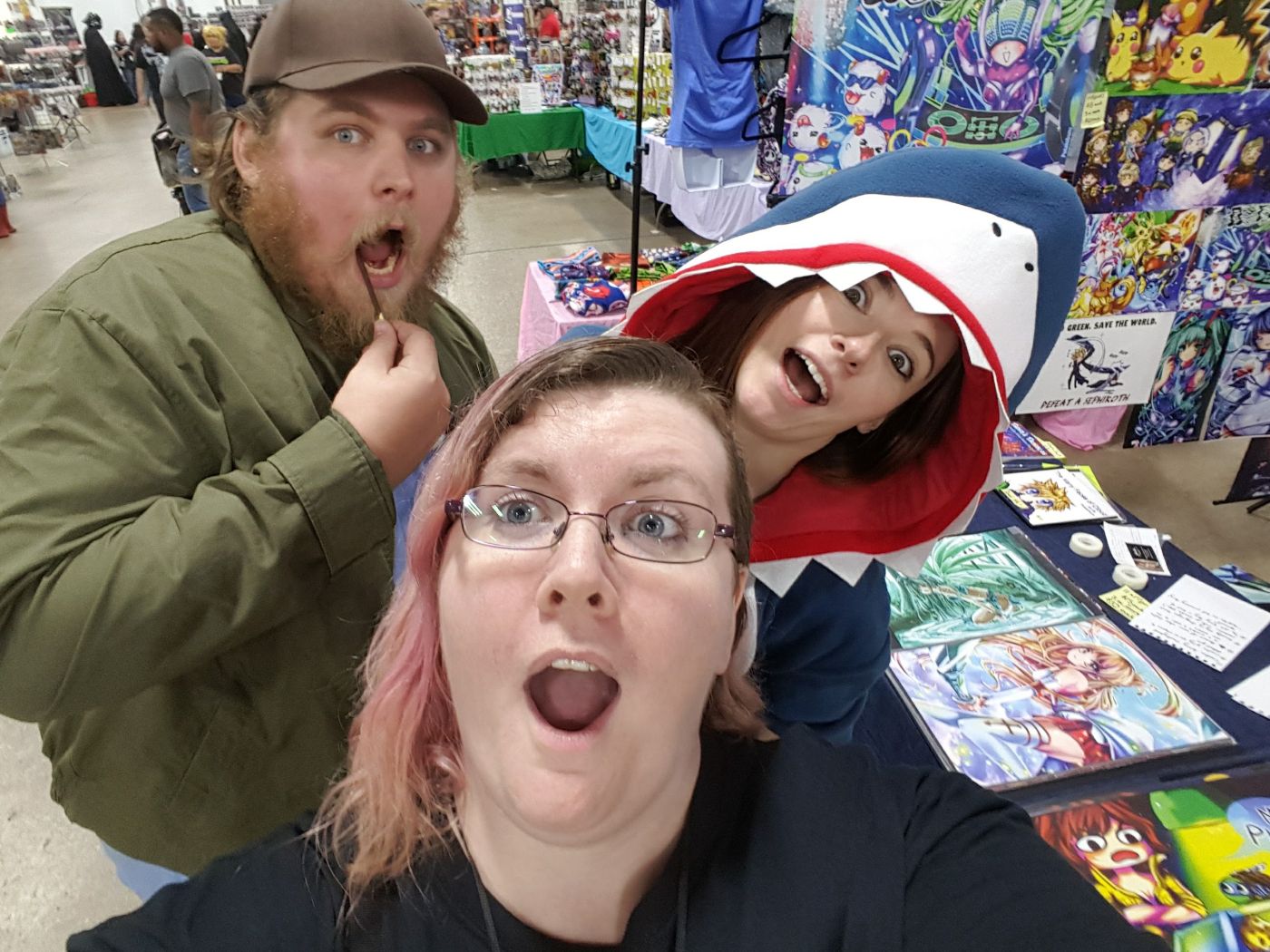
Be Someone’s Superhero is about stepping up for others. You don’t have to have a superpower to save someone. Superheroes are so much more than that. Kids at the Children’s Hospital of Philadelphia can be stuck there for days or months. Every donation we get buys an iPad so they can be distracted from shots or IV’s; gaming consoles so they can continue to have fun and be kids, even in the hospital; toys, DVDs and so much more. Every cent makes those donors Superheroes for them.
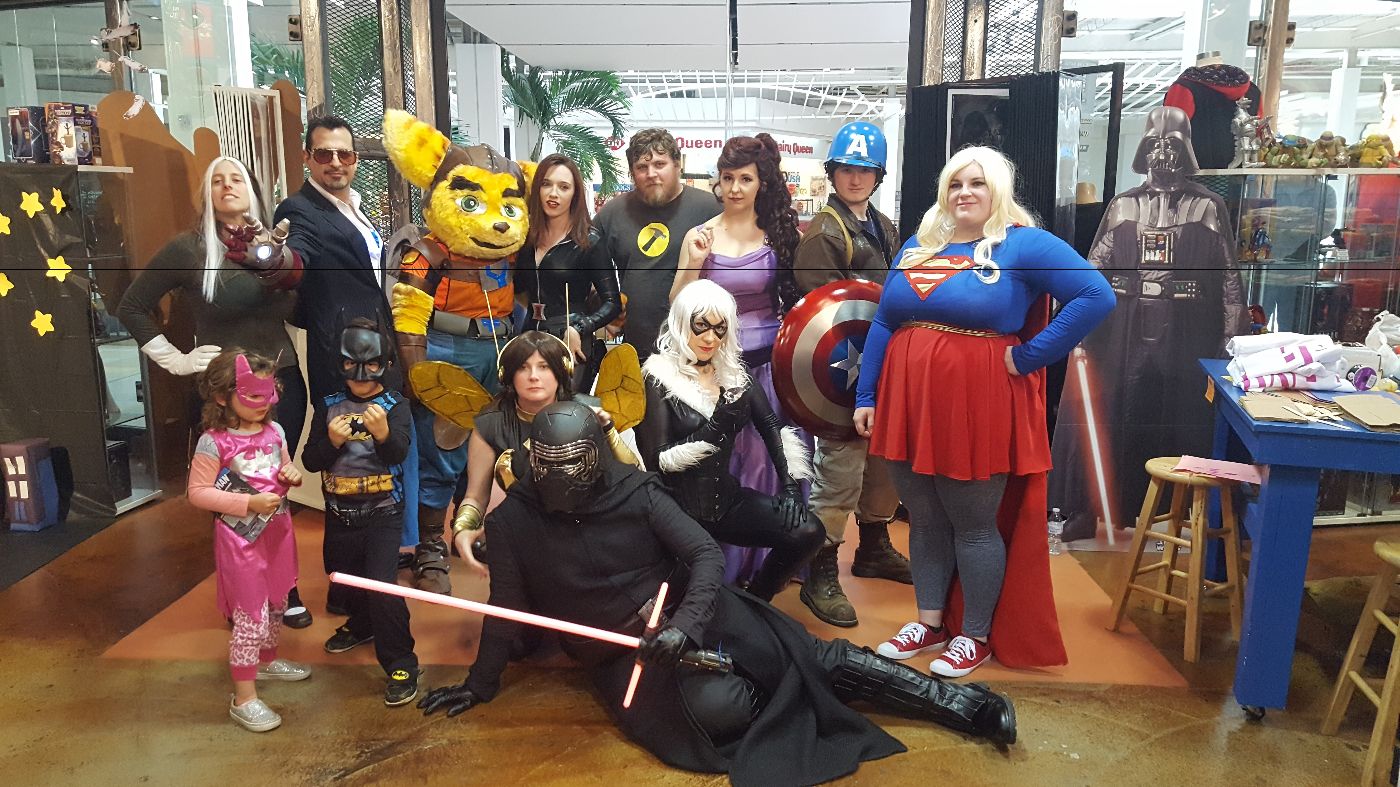
You’re Not Alone focuses mainly on Anti-Bullying. A large chunk of us has been bullied in some way, shape, or form. A few of us are suicide survivors. We want people to know that they aren’t alone in their struggles. Be it race, religion, gender, sexual orientation, financial status, or whatever. No one is alone in those struggles and we want to show people that there is another side to it. If I had taken my life as a teenager there would be no Real Women of Gaming.
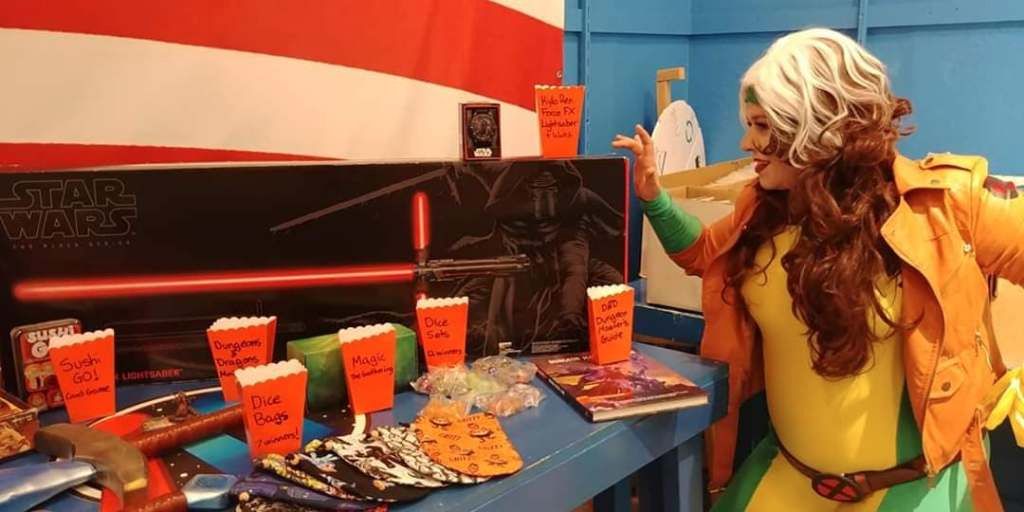
Charities & Champions is the most fun event. We get together with other D&D streamers/podcasters and play for 12 hours straight to raise money. So it’s six of us in a room nerding out and making a difference. We allow viewers to donate money and change the very game we are playing, to help the players or hurt us. It’s typically to hurt us, but it’s always entertaining.
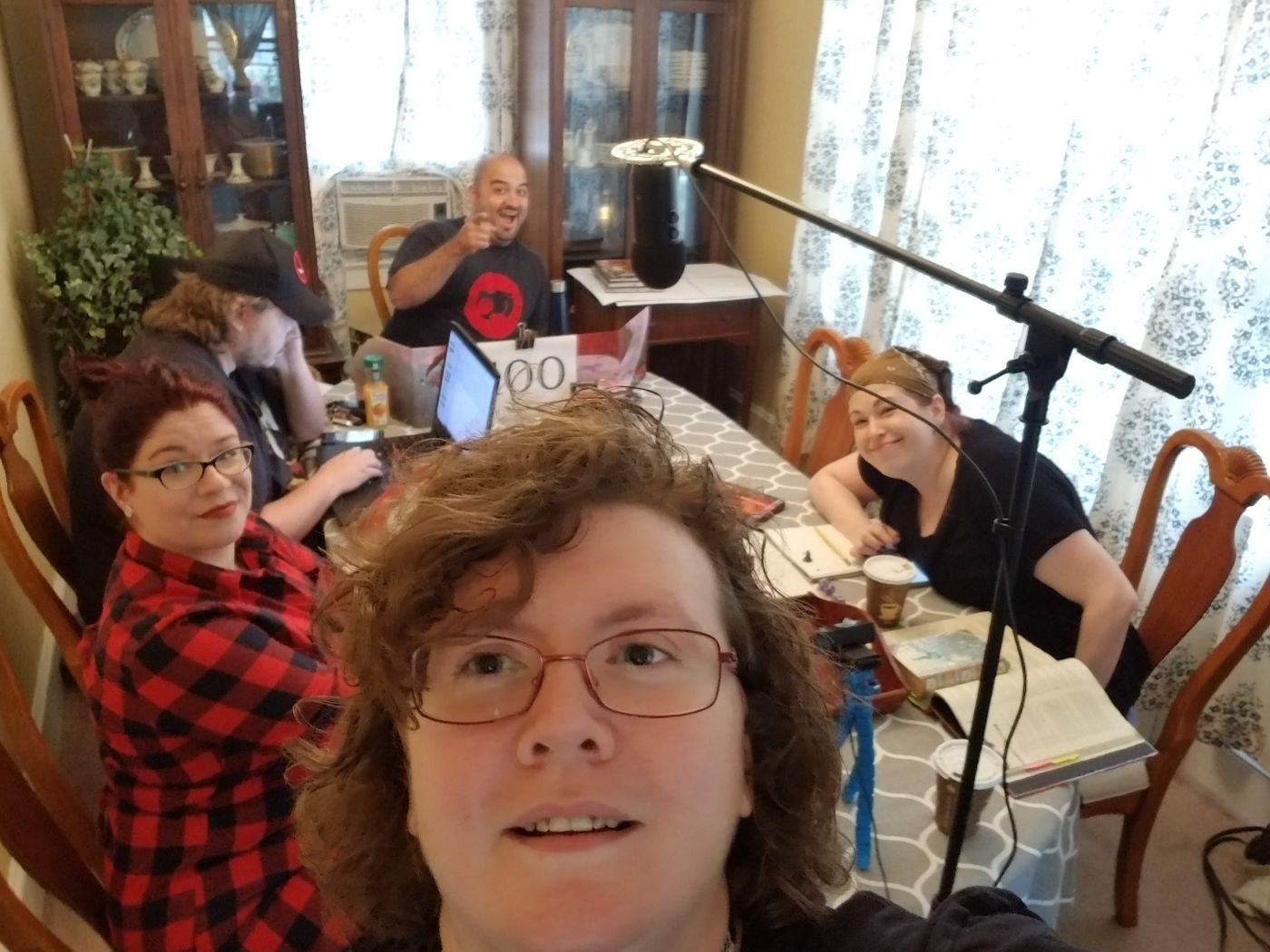
I am proud of the content that we put out. From silly to serious, from article to TTRPG stream, these amazing people put their hearts into it. We are a family and we are all volunteers here. So we 100% do it because we love what we do and we believe in our goal which is to promote inclusivity while celebrating diversity. We want everyone to have a seat at the table, no exceptions.
Gaming, Together
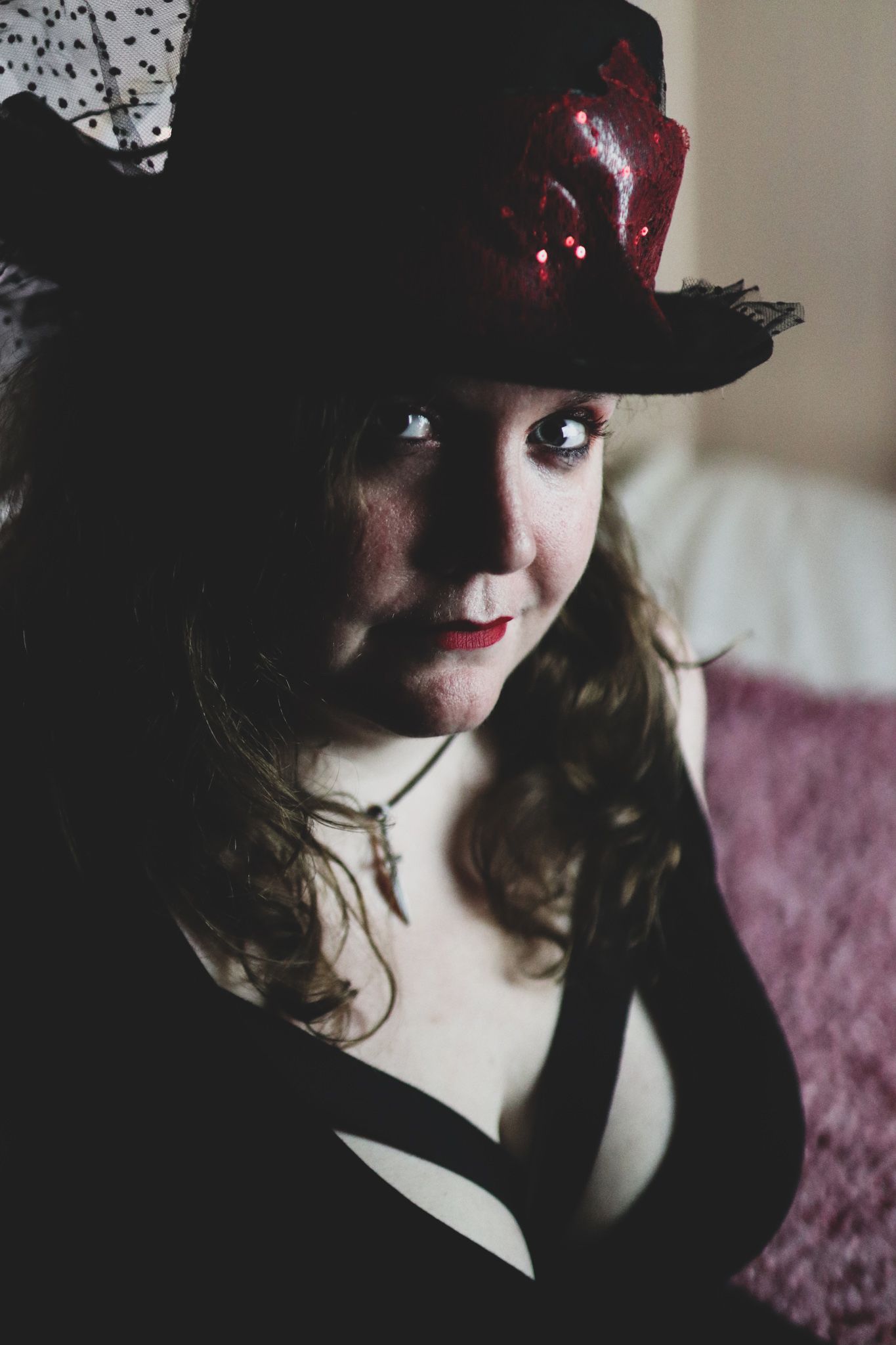
Hey everyone! I’m Crymson Pleasure, the founder of Real Women of Gaming. I am a stay at home Mom of my 5-year-old daughter, Lilith, and that is my ‘day job’, which is a lot more than most people think it is. On top of that, I am a mental health advocate. I have Complex PTSD and am very open about it, along with anxiety, depression, and ADHD. I run a show on my personal Twitch channel called Coffee w/ Crymson where we talk about mental health/illness from the view of those with mental illness themselves. I’ve spent the past few years in therapy and on medication and it has literally changed my life. I want to take away the stigma and encourage people to seek help when they need it. That is also one of the many reasons we host so many charity events. I am also a huge gamer (TTRPG/Video/Board), horror nerd, writer, and streamer.
(All images reproduced with kind permission from Crymson Pleasure)
By Tabea Iseli (CEO & Lead Developer -- Stardust)
Zurich
December 2020
This is the story of AVA, an interactive fairy tale based on tarot cards and our personal experiences. It’s quite a long story and I won’t deny that it’s hard for me to condense all this into 800 words. Which details are important? Which ones are most interesting? Do I just focus on one aspect that is important to us? But no. Let’s take another route. This format is about change, about evolving and growing, about shaping our present and future. So let’s look into how AVA came into existence, how it changed and evolved, and how it also changed our lives.
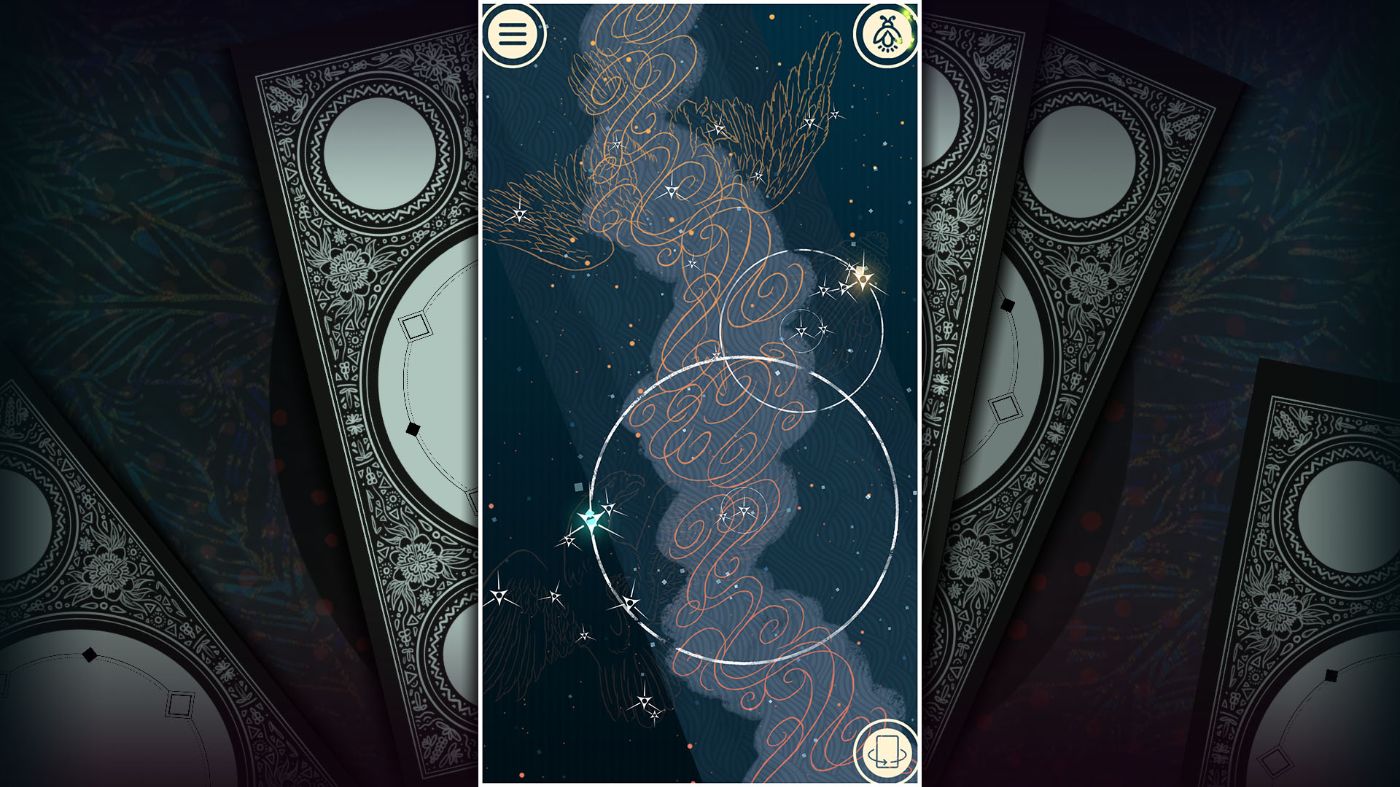
So who even is “us”? At the beginning, it was just me. That sounds lonely, and to be honest, it really was. It was 2017. At that point, I was working in the game industry for around three years. But I wasn’t sure if I wanted to be in it for even just one more day. The three years were equally filled with joy, meeting wonderful people from around the world, and the feeling of finally working a job where I shine, but also with crunch (the industry term for working overtime constantly), abusive management, and sexism. Lots of sexism. If you look at the statistics of how long women stay in the game industry, it wouldn’t have been a surprise if I left. But then there also is the fascination of video games and the passion I had and still have for them.
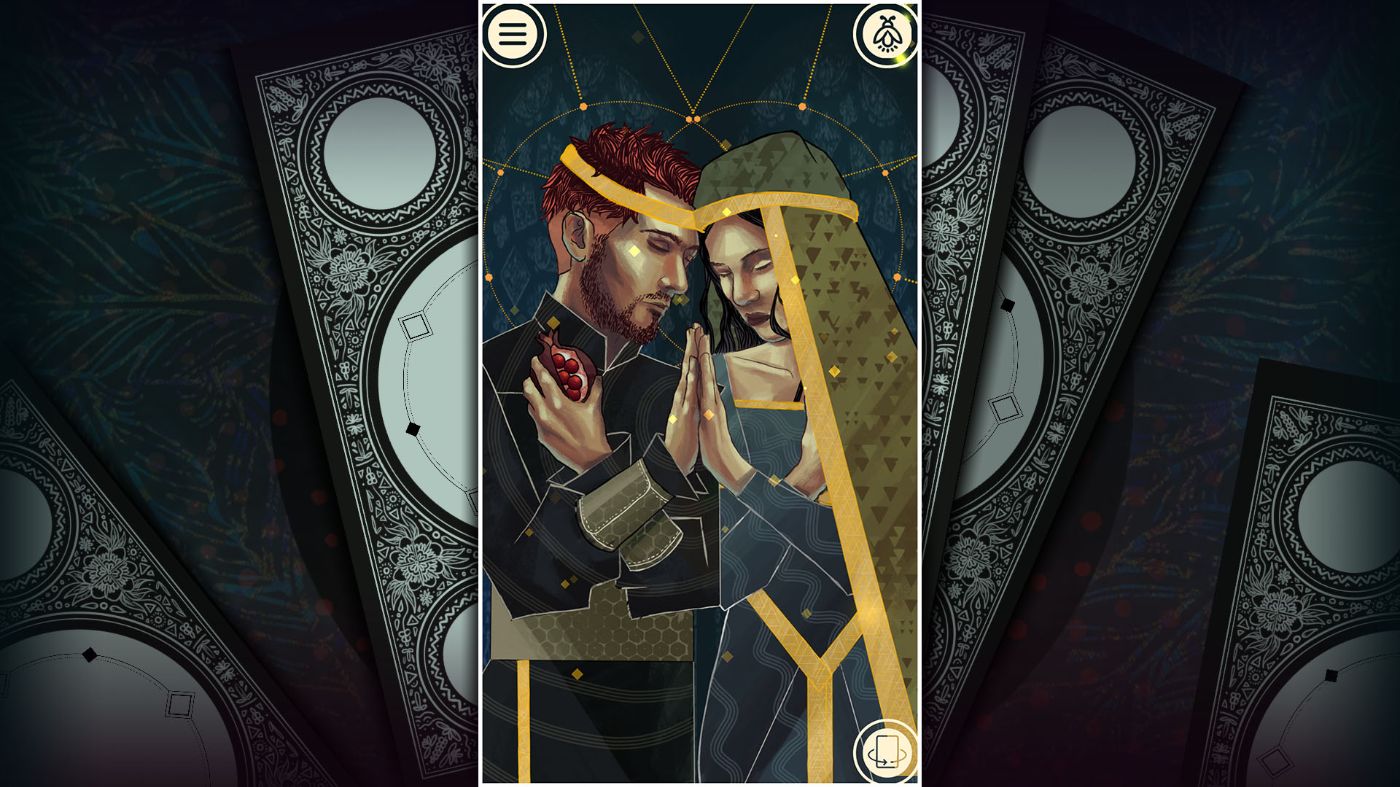
The more I talked about these experiences and feelings with my peers, the more I realised how I’m not alone at all with this. I also realised that exchanging and sharing was a healing experience for me and my peers (this was pre #metoo, so talking about it wasn’t really that common at that point, at least not in my environment). And so the desire to build a project around this formed. I wanted our voices to be heard. I wanted other marginalised people to know that they are not alone. I wanted others to understand our situation. I wanted a dialogue. This is how AVA was born; a game that is based on these experiences, a story about being marginalised and harrassed, but also the story of the burning desire to overcome, thrive and belong.
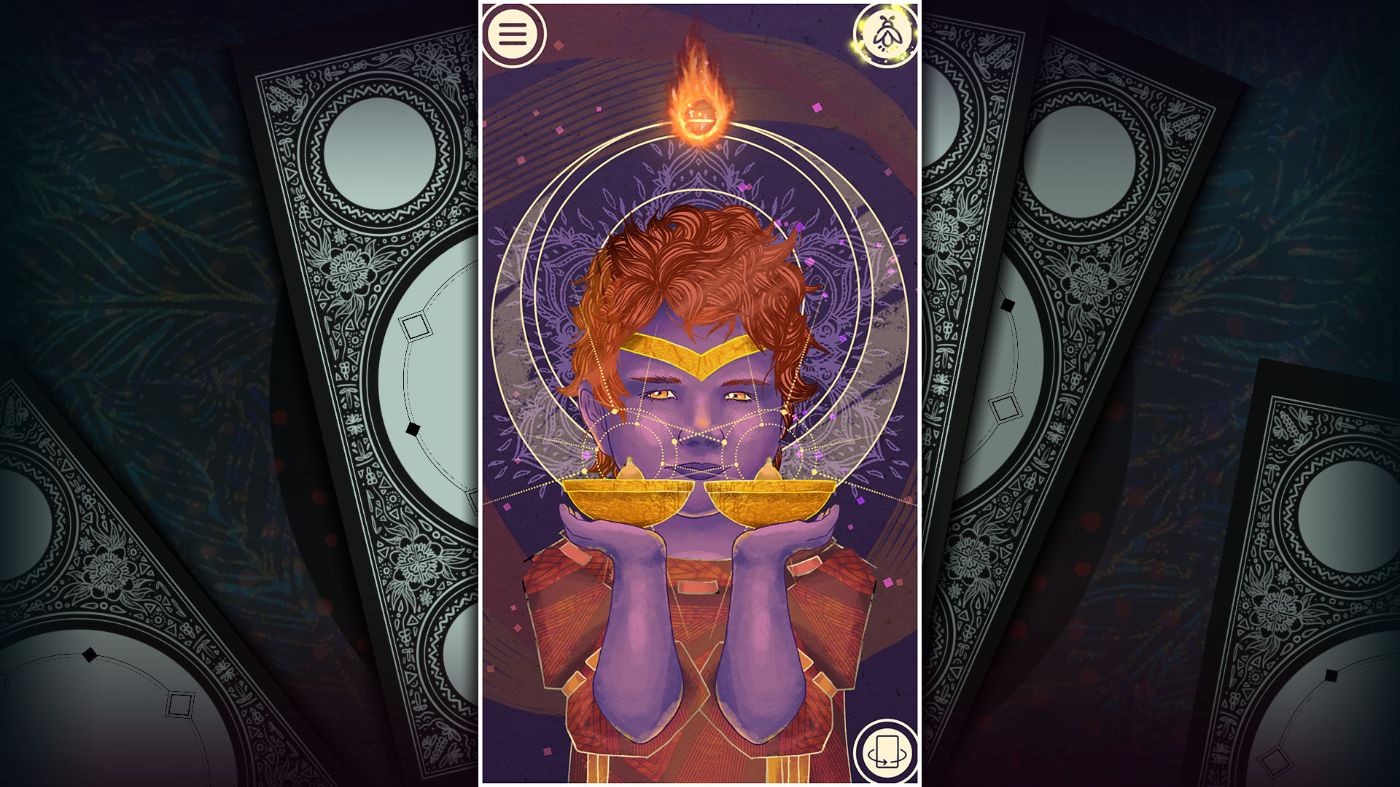
A team formed around this vision, and we started to build an interactive fairy tale game. I won’t go much into the details about why a fairy tale, how it’s connected to tarot cards, and how the whole game works. Let’s just say we found something we thought is unique, well suited to talk about serious issues in an entertaining way, and also appealing to a diverse audience; thus allowing us to start the dialogue. Then #metoo happened. We were thrilled! Of course, not because of all the horrible things which came to light, but because this was something which got the conversation going on a large scale. Because it was proof to us, that we’re working on the right thing.
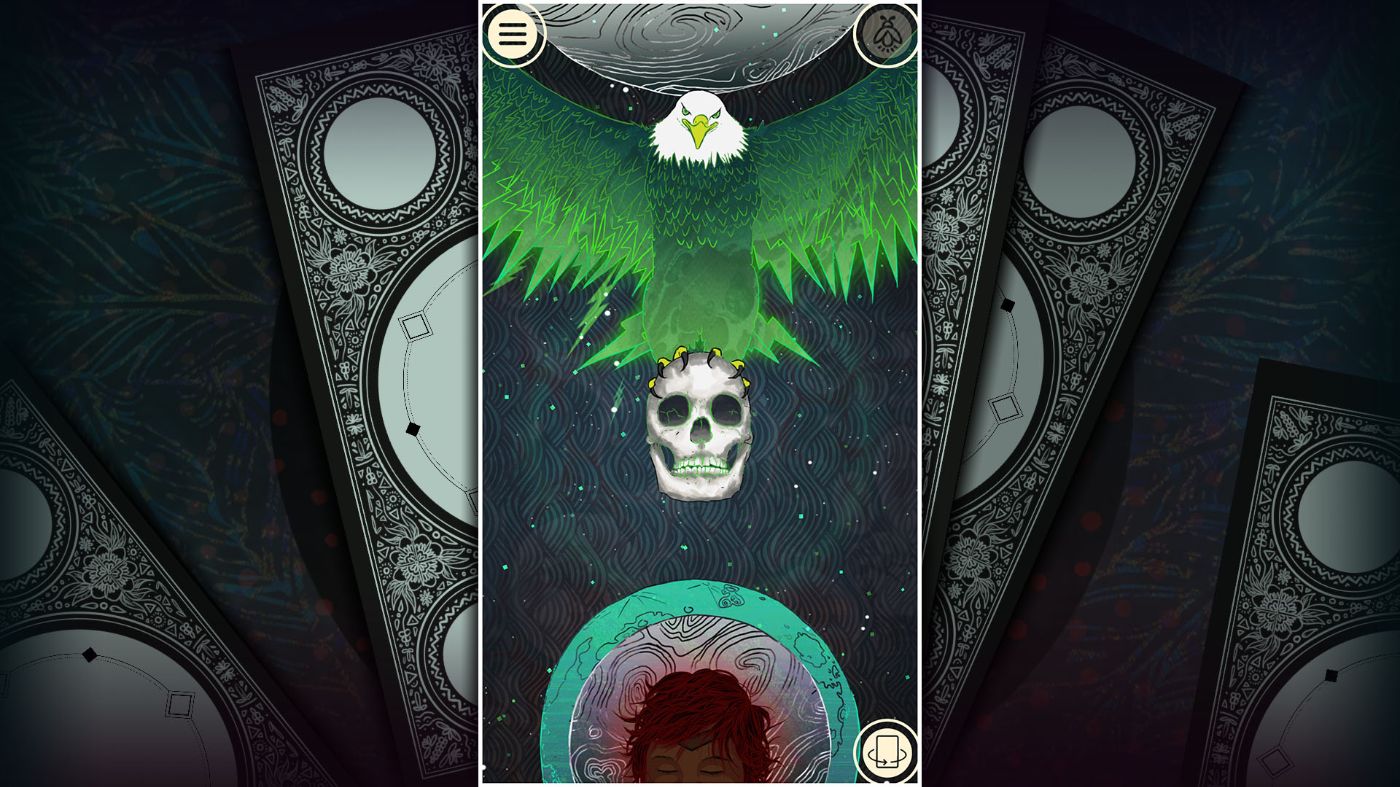
The longer the conversation went on however, the more we realised how lost and hopeless we felt. Everybody could see how women around the world, in every field, were experiencing this. Yet the change seemed to be small, punctual and slow. Months and even years passed, but again and again, similar stories popped up. So we felt the need to use AVA not only to start a conversation, but also to create actual change. But how can a small indie game create actual change? We were just a small team with a very limited reach. The more we talked about this, the more we realised that it wasn’t about us encouraging others to do something, it was about us doing something. So AVA had to become more than just a game, it needed to be about the people behind the game, the things around the game, and the opportunities that arise from us creating that game
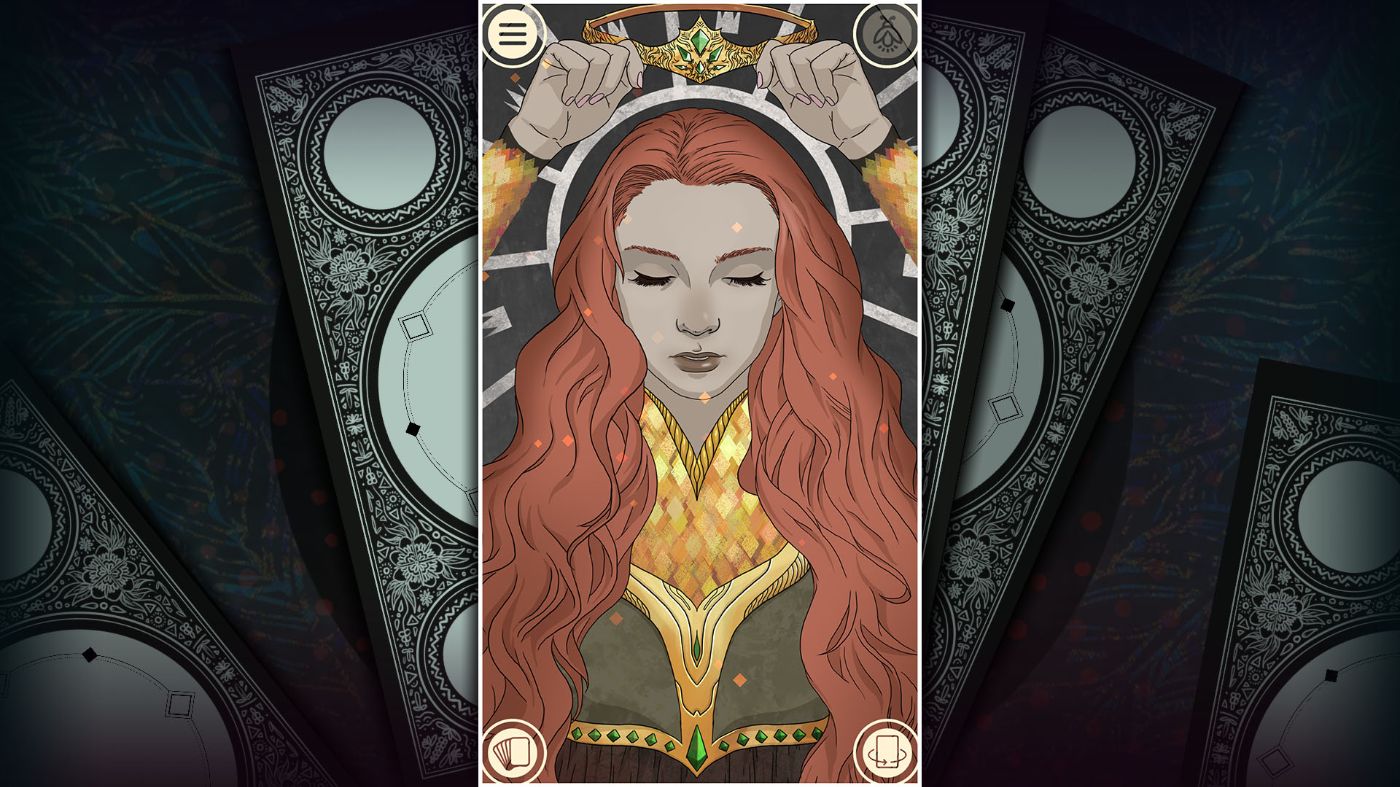
Looking back, this was the most important decision we took in AVA as a project. We are proud of AVA. It has become a beautiful, unique game, and everything we could have hoped for in a debut title. But AVA is so much more. It was a project which allowed us to turn our negative experiences and the feeling of powerlessness in a world full of inequity into something creative, into something we love and which grew. It allowed us to work with over 20 wonderful artists from around the world. It allowed us to fund a company, to hire diverse, talented people and to strive to give them a welcoming workplace. Last week, our 6th team member joined us, and together we’re embarking on the journey of our second game. All of this because of a small game idea about fairy tales and tarot cards.
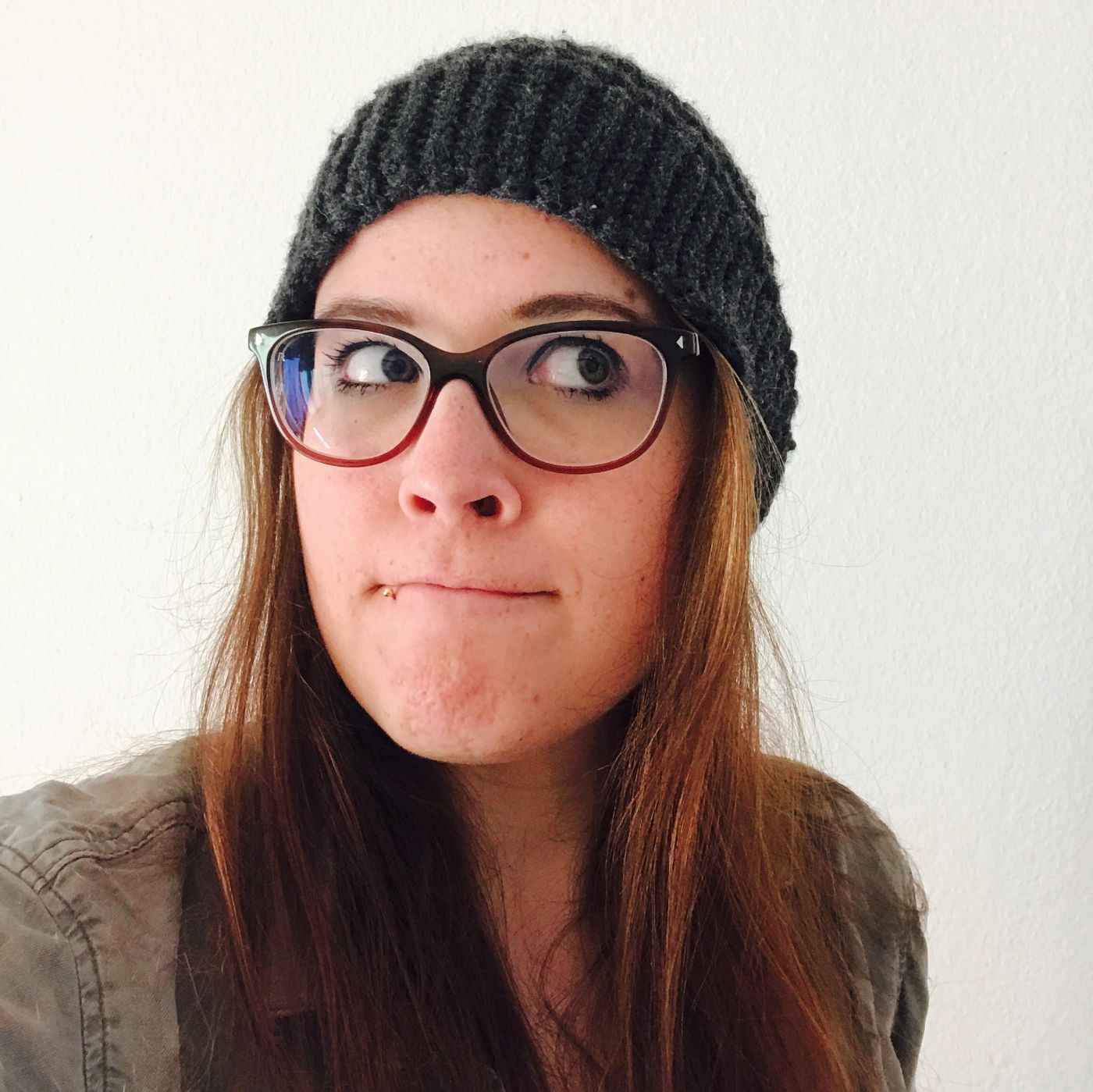
Tabea studied Game Design at the Zurich University of the Arts. She wears many hats and that’s exactly what she loves about her job. Tabea has a background as a print production professional and graphic designer. She worked as a programmer and game designer for multiple renowned Swiss game companies and Universities, such as Blindflug Studios and University of Applied Sciences and Arts Northwestern Switzerland. In 2019 she founded Stardust, an indie game company creating meaningful games for a diverse audience. Tabea has a strong focus on gender and diversity in everything she does, and is also a Women in Games ambassador.
(photo credit - Tabea Iseli)
By Jordan Erica Webber
Leamington Spa, UK
November 2020
I’m the eldest of eight siblings, four girls and four boys, and we’ve all played video games all our lives, so I didn’t know that other people thought it was a masculine hobby until I grew up. Sometimes it feels like I’ve built a career around tackling misconceptions about video games and the people who play them. I used to work in video game retail, gently advising parents on what was and was not appropriate for their children to play, and then I ended up writing about video games in the Guardian and talking about them on BBC Radio 4.

Now that I’ve been discussing video games professionally for more than eight years, I’ve become tired of having the same conversations over and over again. I don’t want to be called on to defend video games against hyperbolic accusations from people who haven’t bothered to learn anything about them, but I also don’t want to play the part of video game evangelist, insisting that games are some kind of superpowered force for good. My goal is to find and create space for the kinds of interesting and nuanced conversations that are afforded to other media, without having to explain or justify the existence of the entire medium beforehand. Hopefully, some of the work I’ve done reflects that goal.
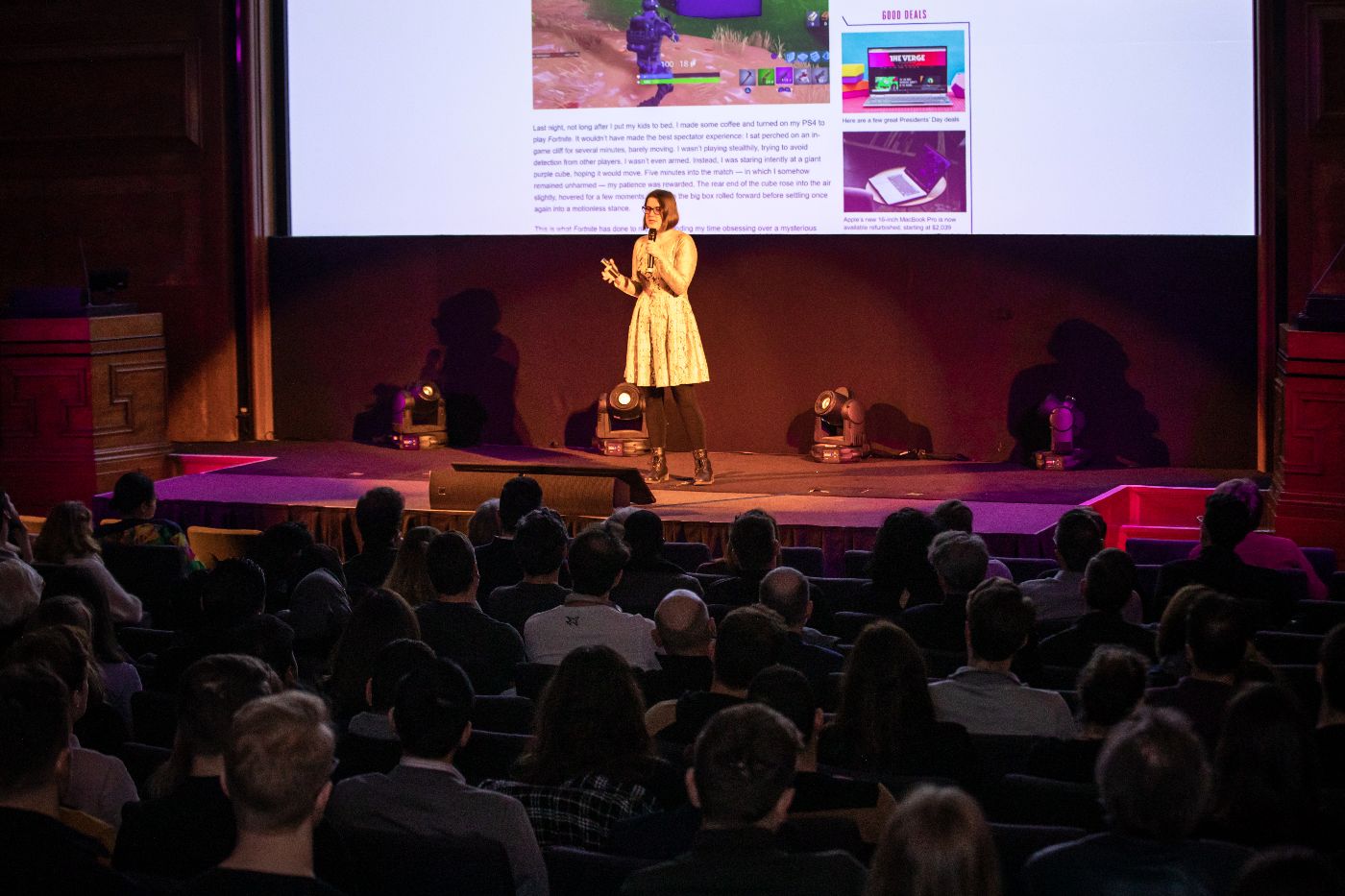
The book I co-authored with Dan Griliopoulos, Ten Things Video Games Can Teach Us explores philosophical thought experiments through the lens of video games. I’m inclined to believe that society could do with more philosophers, and I’m sure the great philosophers of the past would see the potential for video games to playfully demonstrate and test their theories.
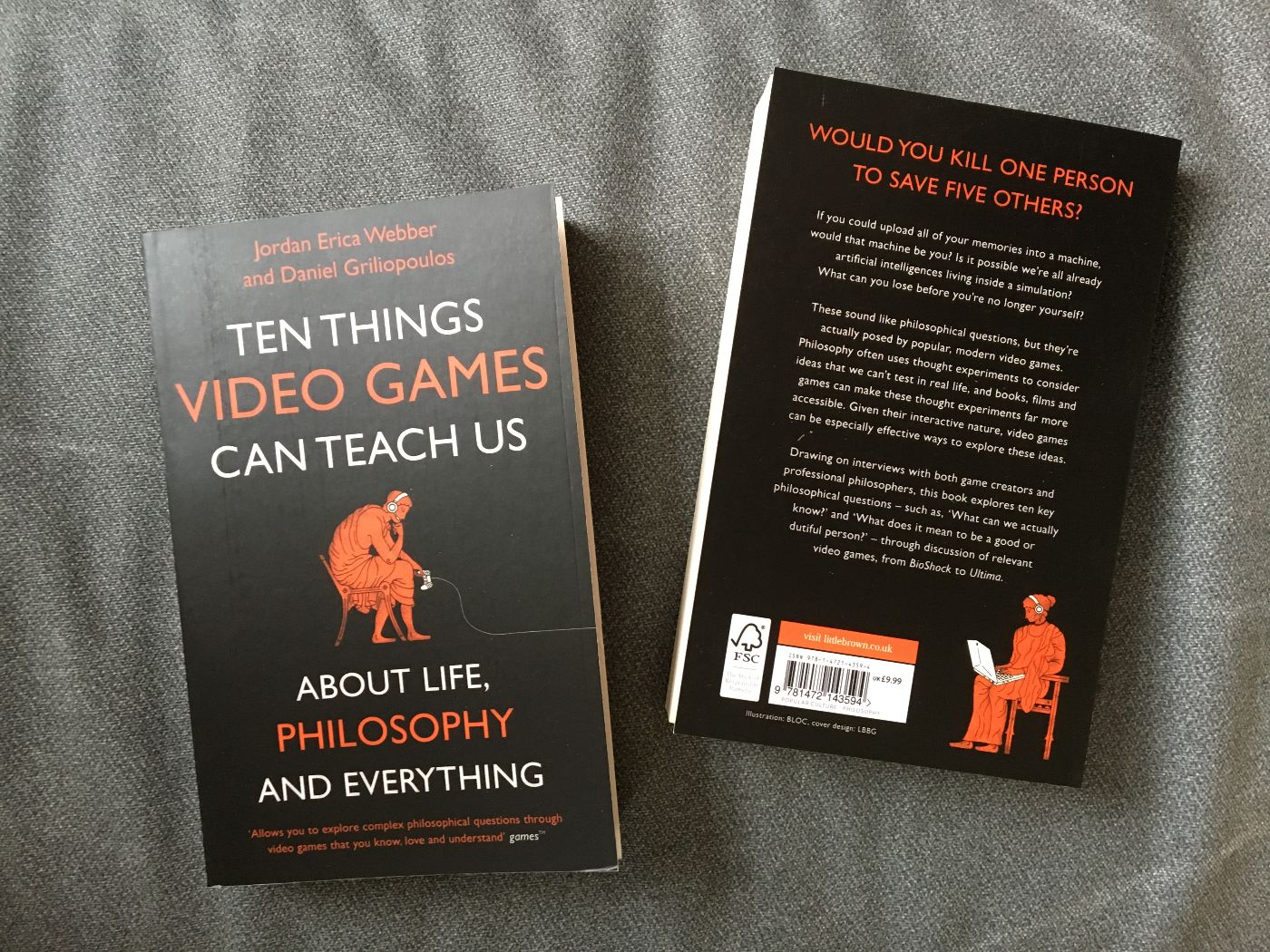
My podcast, Talking Simulator, is a series of short conversations about video games with interesting people who play them. In the first series I interviewed Katie Chironis about turning a Shakespearean tragedy into the time-looping adventure game Elsinore, and talked to Keza MacDonald about how video games treat parents and how parenthood changes one’s experience of games. In April 2020, at the start of lockdown, I released a mini series in which I interviewed five of my friends about Animal Crossing: New Horizons within the game itself. I’m currently recording the next series, and the conversations I’ve had so far have buoyed my 2020-depleted spirits.
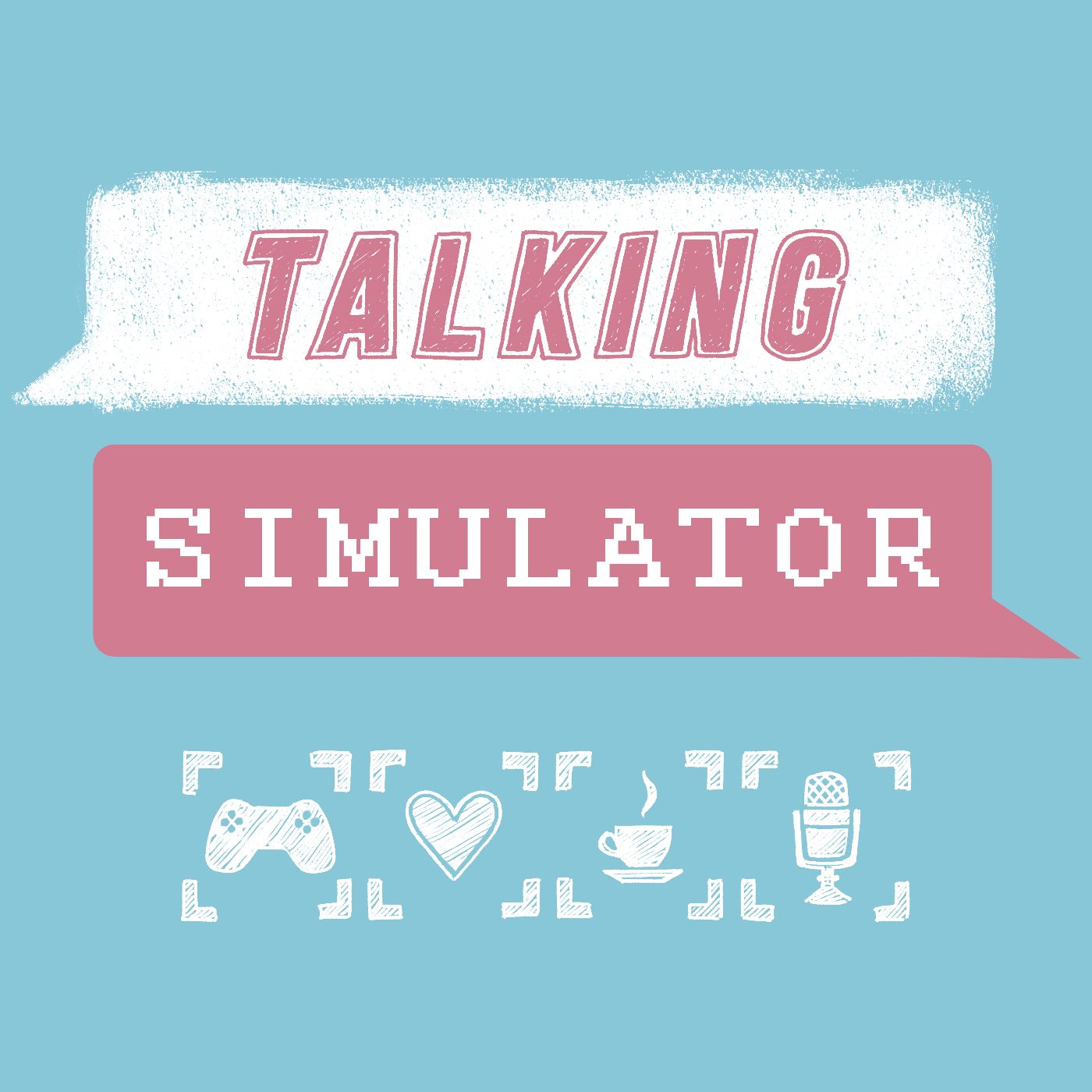
I’m especially grateful that BBC Radio 4 has given me space to have more interesting conversations about video games. I’ve been reviewing video games on Front Row for years, and have even been able to bring games to the table when I’ve presented Saturday Review. And my recent Radio 4 documentary, Playing with the Dead, explores memorialisation in games—whether by accident or design—and what it’s like for people to come across the digital traces their lost loved ones have left behind, an experience one interviewee described as “sacred”.
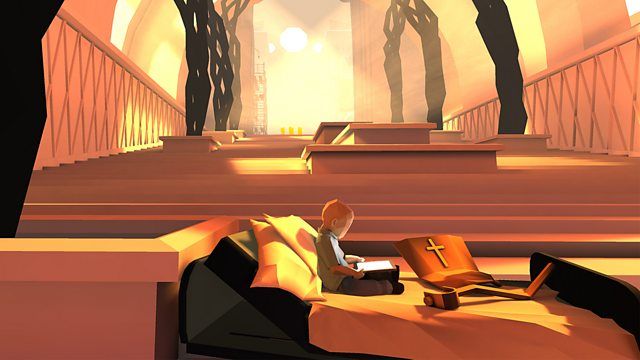
One reason I like writing and talking about games is that they continue to surprise us, perhaps in part because of those preconceptions people have. Despite the cyclical nature of some conversations, there’s so much more to say that hasn’t already been said. I see a lot of people who seem to get into writing about games because they want to make them some day, but I don’t really have that desire myself. I’m happy to let other people do interesting creative work that I can then go and tell the world about.
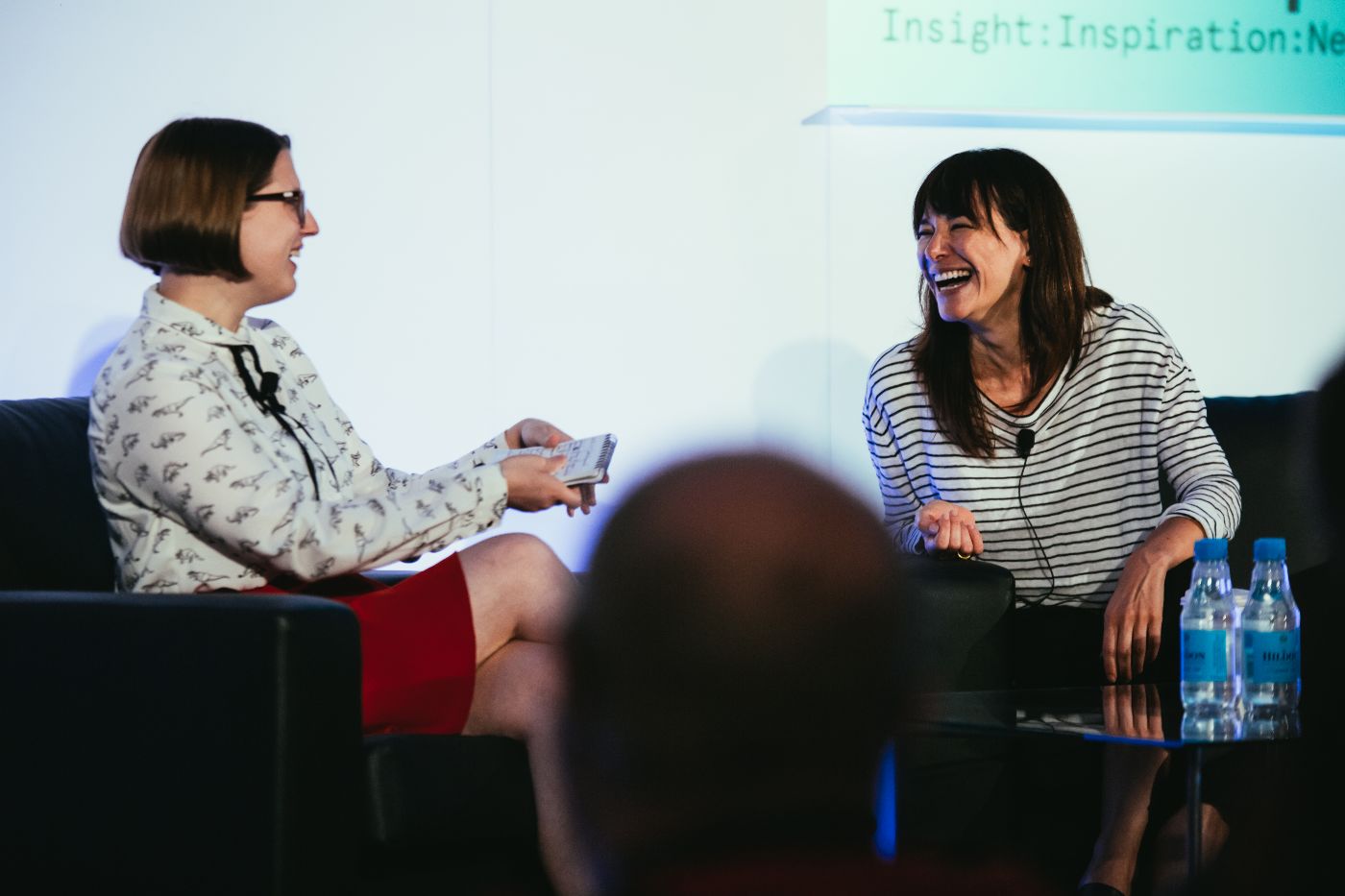
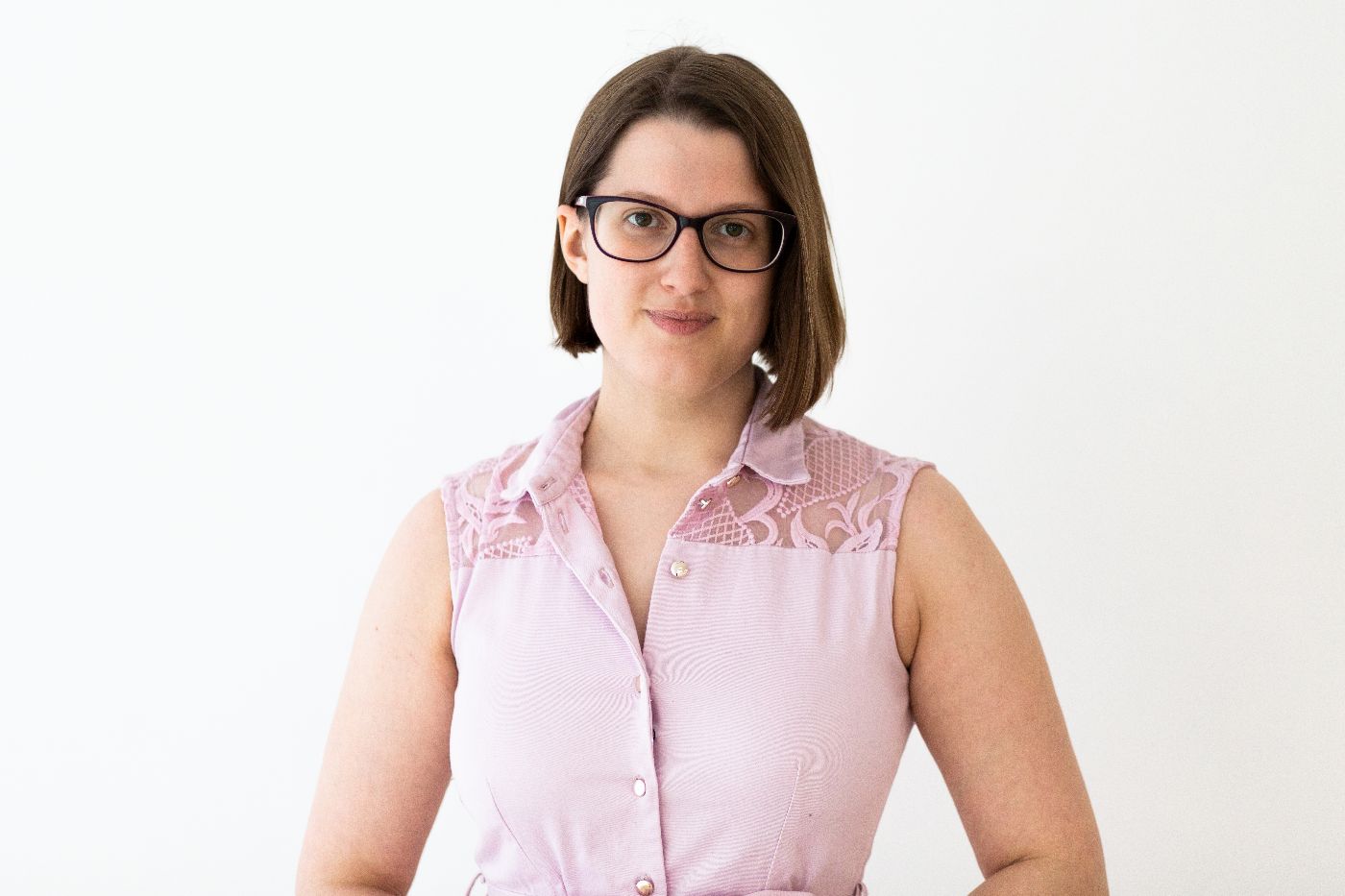
Jordan Erica Webber is a writer and presenter. She has been the resident gaming expert on The Gadget Show (Channel 5) since 2017. On BBC Radio 4, she presents documentaries and guest presents shows like Saturday Review. She hosts multiple podcasts, including Wild Wild Tech (Spoke Media) and her interview show Talking Simulator. Most of her writing about games can be found in the Guardian, and she has also co-authored (with Dan Griliopoulos) a book called Ten Things Video Games Can Teach Us. In her spare time, she bakes, sews, and performs in local musical theatre productions in Leamington Spa.
(Photo credit -- Dave George at GeorgeCreative.uk)
By Chella Ramanan & Claire Morwood (3-Fold Games)
South West UK
October 2020
We are 3-Fold Games, a micro games studio, consisting of Chella Ramanan and Claire Morwood. Chella Ramanan is our narrative designer and Claire Morwood is our programmer and artist. Together, working mostly remotely and without funding for the majority of the project, juggling full-time jobs and life, we made a game over the past four years. It’s called Before I Forget and it’s about a woman with dementia. And we finally released it in July 2020.
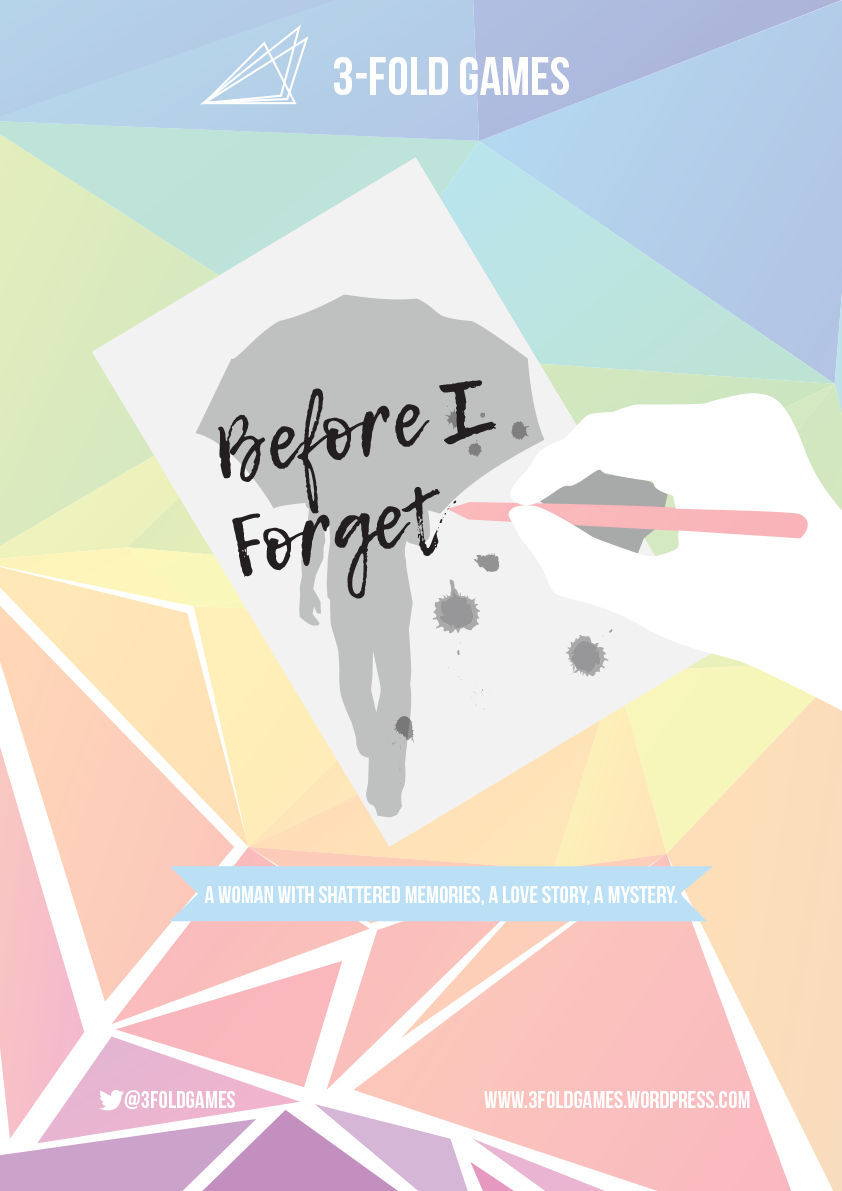
In 2016, two women wanting to make games signed up to the XX+ Game Jam in Bristol, UK. A game jam, for those who don’t know, is a weekend-long creative event where people are thrown together to make a short game or prototype based on a given theme. This particular event was open to women and non-binary people, in the South West of England. And we both signed up.
We were put in a team together with another woman and spent the next 24 hours or so, making a game based on the theme ‘borders’. We tossed around a few ideas but finally settled on the idea of a woman with dementia, in a house. The idea was a story concept Chella had been kicking around for a while but had done nothing with. Often, an idea needs the right medium to find the story it’s meant to tell and this was the same with Sunita, the protagonist in what would become a game called Before I Forget. A lot of Chella’s writing explored connections between memory and identity, asking what happens when we lose our memories. Who do we become, when we forget who we are or the people around us?
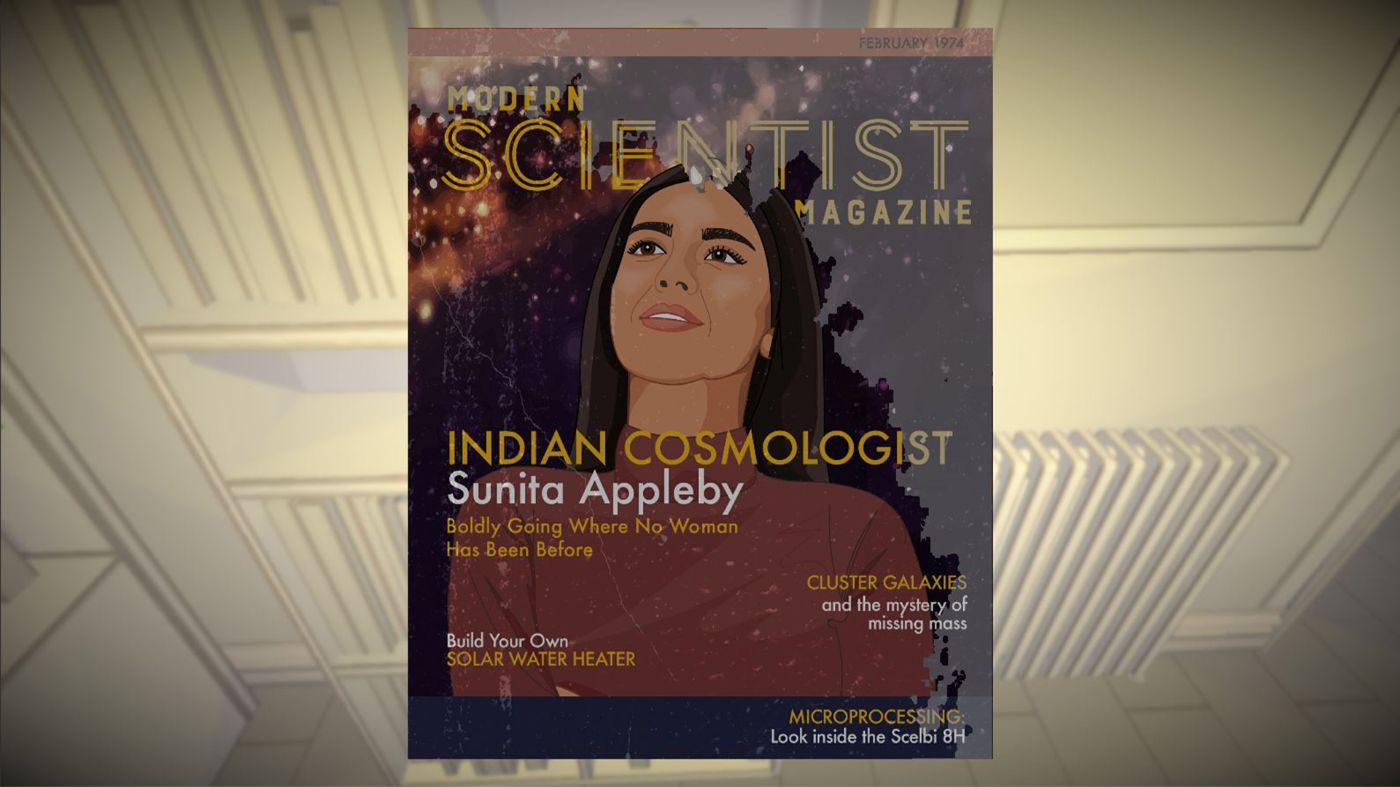
The concept sparked lots of ideas for Claire, who had experience as a programmer and artist. She introduced the colour spreading element, which became a core motif for the game. As players interact with objects in the monochrome house, colour comes back to that part of Sunita’s world, representing a lucid moment, as her memory is triggered.
By the end of the game jam, we had a proof of concept prototype that introduced the story of an Indian woman, Sunita, who came to the UK in the 1960s and married a man, Dylan. Dylan is represented by music, as she looks for him. Players enter a monochrome house at the beginning, but trigger Sunita’s memories when they interact with objects, letters, photographs in different rooms. This allows them to piece the story together and find Dylan. It was a scrappy prototype but it was effective enough that Before I Forget won the ‘audience choice award’, as the game people at the jam would most like to see finished.
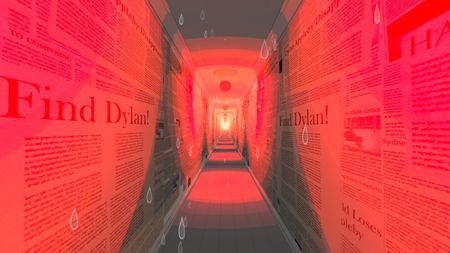
If it hadn’t been for this game jam, we’d never have met. But if it hadn’t been for that award, we almost certainly wouldn’t have continued making Before I Forget. That moment just shows how important it is to have validation from your peers. For someone else to respond to something you’ve made and recognise something in it is invaluable. High on the win, we looked at each other and smiled and said ‘So, shall we carry on and see how far we get?’
We spent almost the next four years working on Before I Forget. We founded 3-Fold Games and found a good creative partner in each other, which is essential when you’re working remotely. The stresses of working on a project in evenings and weekends, with no funding, meant we saw the best and the worst of each other. When one of us was down, the other one was up, and vice versa.
We did apply for funding but that just became a disheartening time-sink for a game that didn’t fit the mould for traditional games investors and felt ‘too gamey’ for arts funding. We tried to make something that was more suited to the market but quickly felt like we were losing the heart of our game and just decided to make the game we’d started at the game jam.
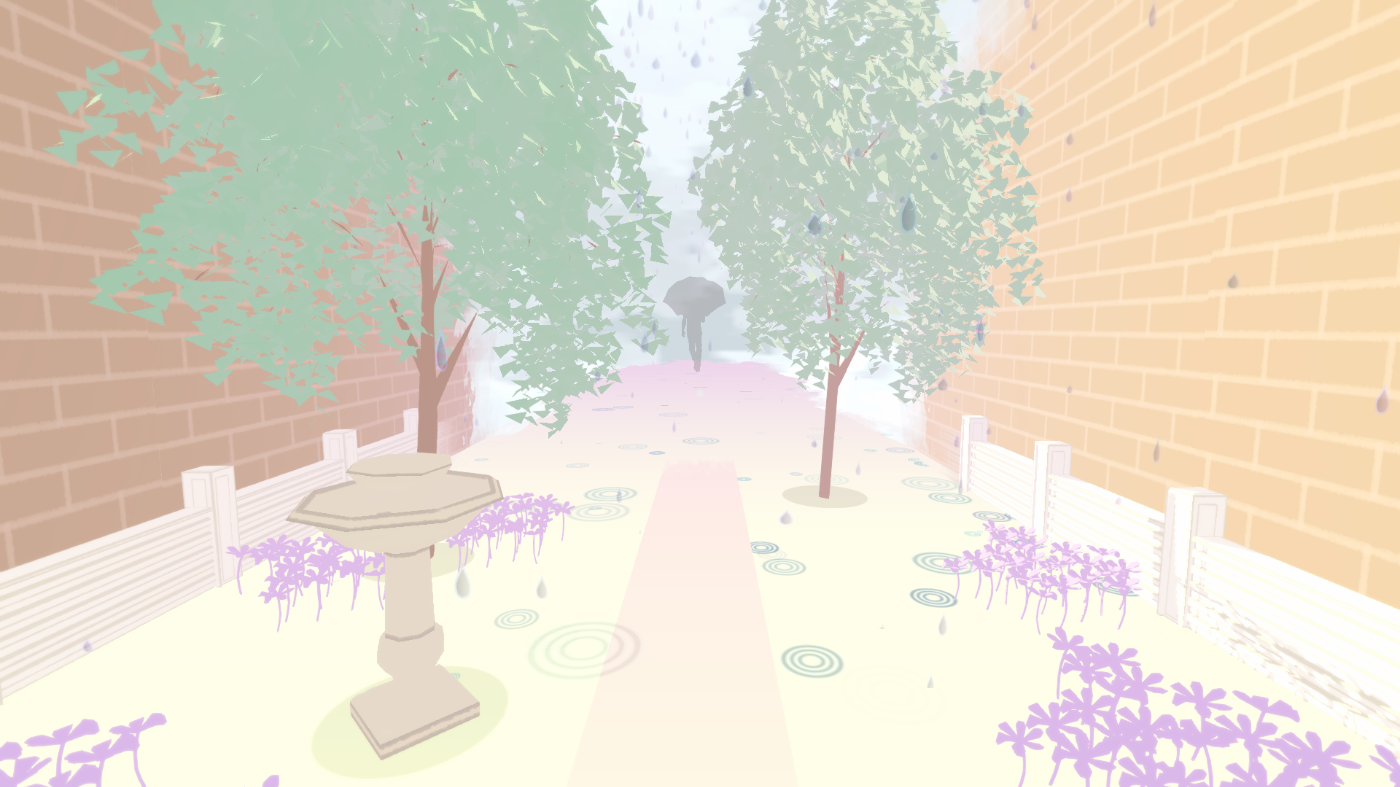
Through 2020, we’ve all discovered that working remotely does work but for creative projects, we found that the weekends we spent together at Chella’s house were so much more effective. There’s so much creativity that sparks from being in the same space and hashing out a problem while slurping soup in the garden, or throwing another log on the fire and making a cup of tea, or walking through the snow together. We worked remotely 90% of the time, but that other 10% was crucial.
Every year, we thought that would be the year we’d launch but 12 more months would slip by until we finally got some finishing funds from Humble, which helped Claire work on the programming full-time and get it finished.
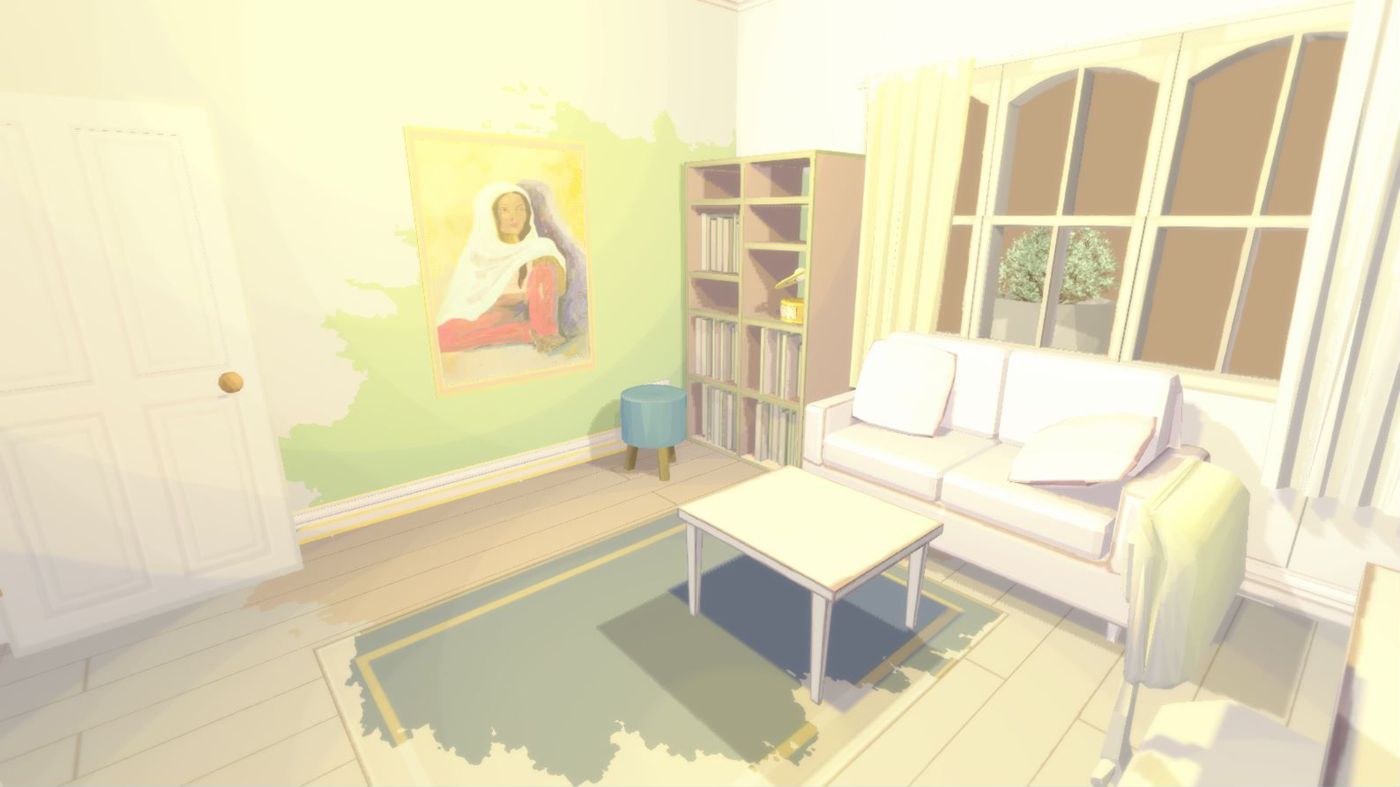
The game focuses on celebrating Sunita’s life outside of her disease, while not shying away from the realities of living with dementia. We collaborated with medical experts during development in order to refine the portrayal of Sunita’s symptoms and timeline of events, including a partnership with Alzheimer’s Research UK.
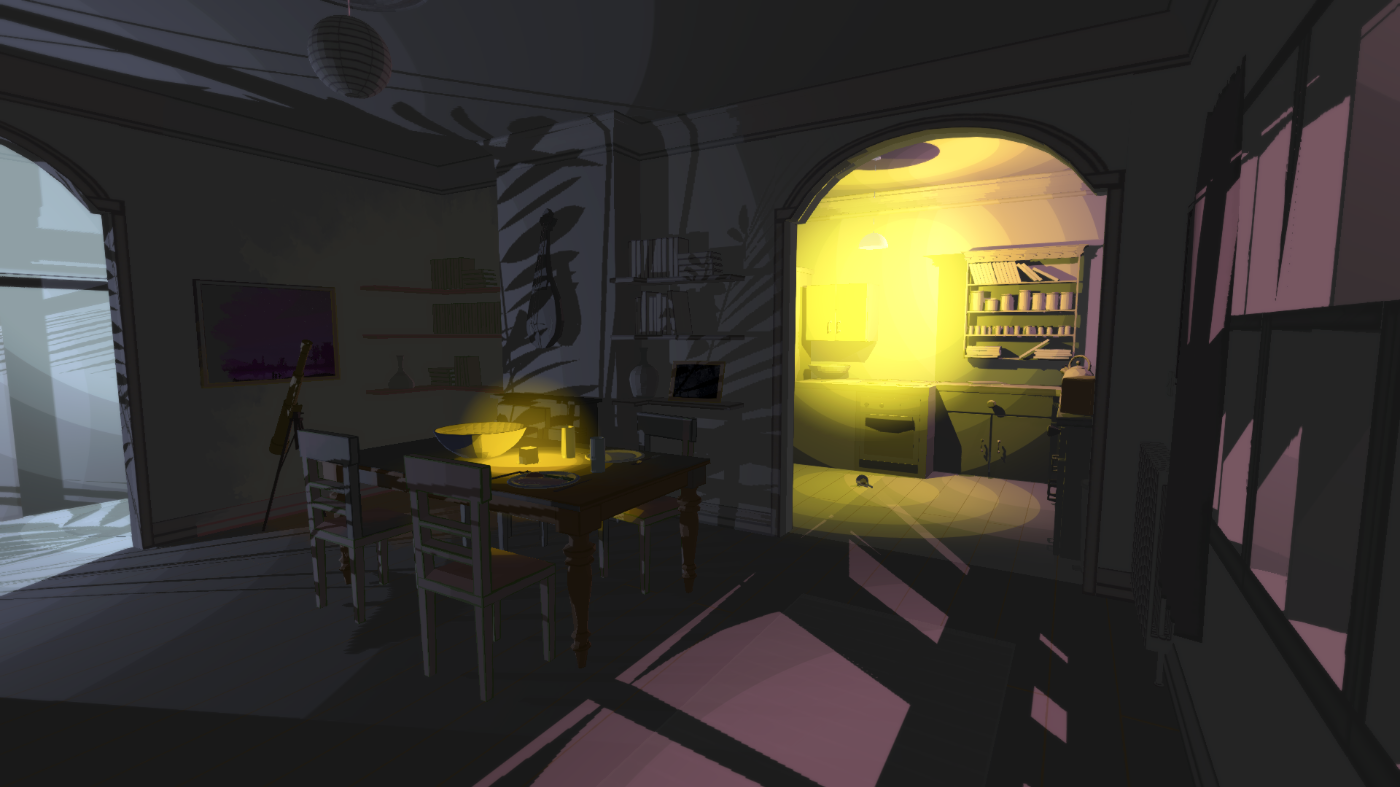
We are interested in telling those stories that don’t get the space they deserve within games. By exploring diverse narratives, we are expanding the perception of games and the types of stories they can tell. That’s what we tried to do with Before I Forget and hope to do with our future projects.
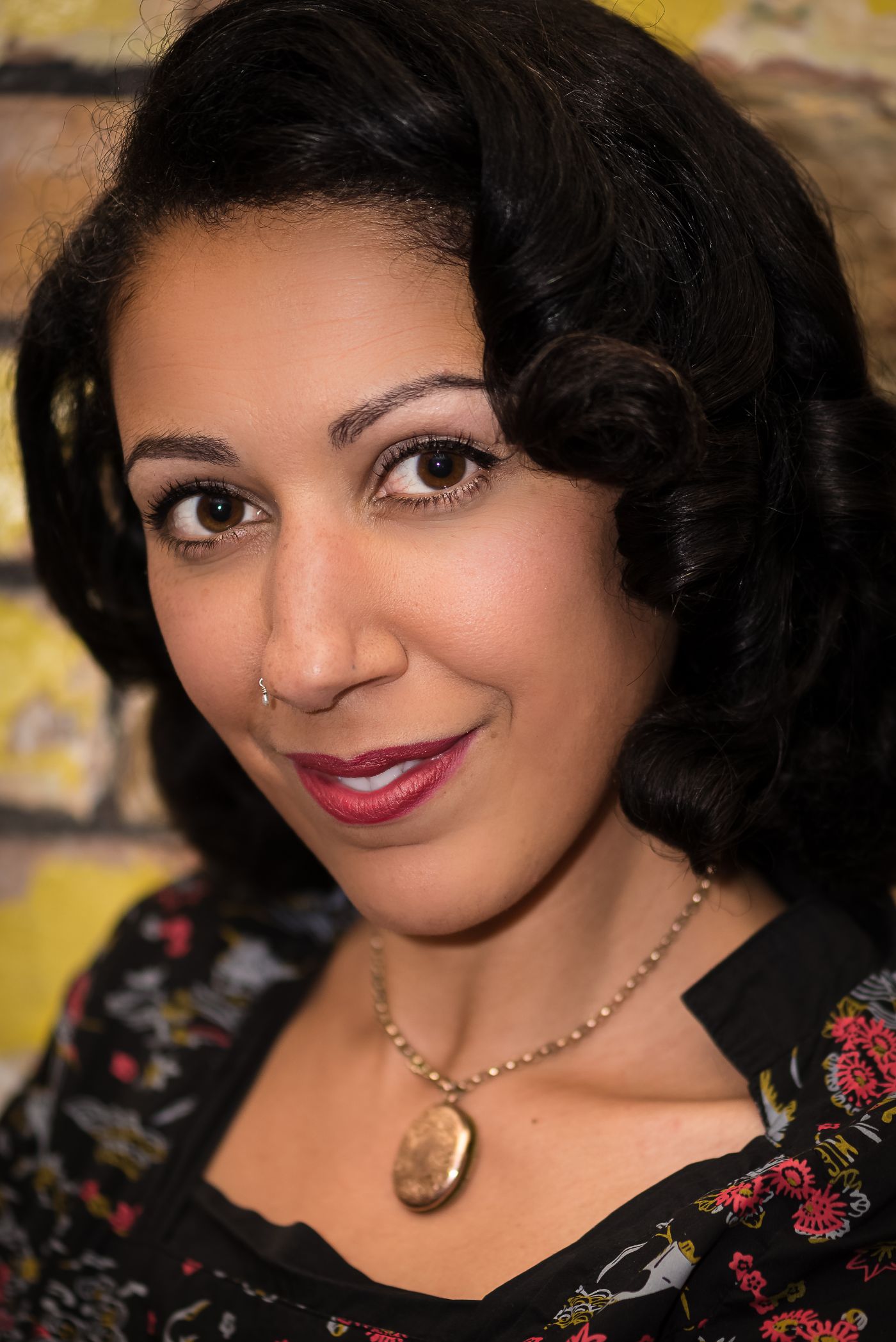
Chella Ramanan is a narrative designer of Scottish and Caribbean heritage. She wants to tell stories that represent her own experiences and explore underrepresented perspectives. She currently works full-time for a AAA game studio, in Sweden. She is a former games journalist and co-founder of POC in Play, with awards, including the Evening Standard Progress 1000 influential Londoner for her work in diversity and inclusion in the games industry.
(photo credit - Dave Tucker)

Claire Morwood is a self-taught programmer and artist and is currently freelancing. She has been making games in her spare time for most of her life and is also passionate about helping others do so by organising game jams and workshops. She is involved in a local meetup for women in game development and enjoys giving workshops there as well as at other events. She has also run talks and workshops at several international games events.
(photo credit - Dave Tucker)
Before I Forget was released on Steam and itch in July 2020 and will be coming to consoles in 2021.
3-Fold Games is proud to partner with Alzheimer’s Research UK, to raise vital funds and awareness for dementia research, this World Alzheimer’s Month.

WILD WOMEN PRESS
CONTACTS
Email: vik@wildwomenpress.com